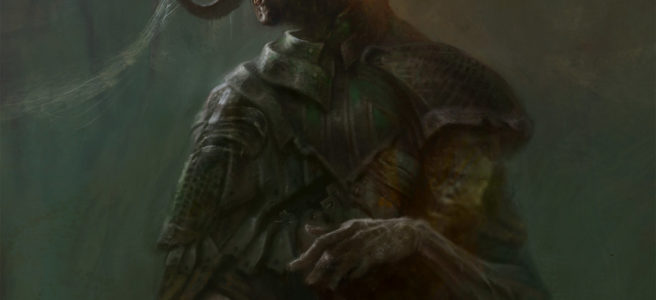Surprise, surprise, the first half of 2021 was much like 2020 with lockdowns and social restrictions making listening to music at home an escape from the hell of anti-vaxxers screaming incoherently outside our doors. The second half of 2021 has been more lively, but somehow infinitely more depressing due to the people obsessed with their freedumbs making this pandemic draw out longer and more deadlier than it needs to be. Through it all there has been music and thank God for that, because I know I needed the escape and emotional release. As is tradition now, let’s look back at the good and the bad new music that I listened to in 2021…
Dishonourable Mention: Volume IV, September Mourning
In early 2021 September Mourning announced that Volume IV would be coming out this year, much to my excitement. However, we’re rapidly approaching year-end with no release date in sight. It happens, especially in a wild year like 2021, but that brings us to why this is getting a dishonourable mention: frontwoman Emily Lazar is a crypto nut and has spent the year going all-in on NFT bullshit. September Mourning has always been a multimedia project, but she’s riding the NFT grift hard, selling bargain-basement animated gifs and her own line of incredibly ugly generative artwork. Considering that earlier in the year she said Volume IV would be out this year, it sounds like the only reason we don’t have Volume IV yet is because she’s tying it into her NFT metaverse bullshit, which is incredibly disappointing and his basically torpedoed any interest I had in supporting this band going forward.

28) Soft Songs for the Quarantined Mind, Smile Empty Soul
Every time I think that I’m done with Smile Empty Soul forever, they find a way to pull me back in through sheer morbid curiosity. 2020 was one of the most unpleasant releases I put myself through last year (only surpassed by the unprecedented awfulness of Trapt) and I did not intend to listen to any new music from this band ever again… but when they released their newest EP on the 12th of January my jaw dropped, knowing that I was looking at a front-runner for “Shittiest Album of 2021” already. That EP’s title? Soft Songs for the Quarantined Mind. Sounds innocent enough, but remember, this is a grunge band who looked at all the political turmoil in America in 2020 and decided that the most important statement they could make is that Instagram and Facebook are making “kids these days” self-absorbed. Also consider that I had serious concerns that Smile Empty Soul were pushing an anti-vax message in 2020, but was giving them the benefit of the doubt due to ambiguity. Well wonder no more because Smile Empty Soul have gone mask-off (literally) with Soft Songs for the Quarantined Mind.
I initially thought that the “Soft Songs” part of the title was going to be a sarcastic dig at people who apparently are too fearful to deal with “real” music, but it’s actually pretty apt – this is a soft, toned-down, mostly-acoustic EP. Even more to my surprise, it starts out fairly well with “Follow”, a strong grunge song which is easily one of the best tracks I’ve heard from the band. The rest of the album feels like a step down in comparison, going a bit too far on the “soft songs” idea and sapping so much energy that they feel downright lethargic. That said, this format does show off frontman Sean Danielsen’s strong vocals, so even though I found the rest of the album to be dull at best, his singing was at least a treat.
All that said, Soft Songs for the Quarantined Mind is absolutely torpedoed by the inclusion of “The Good Boy”. Right off the bat, the song is abrasively anti-mask:
Close those eyes, so scared again/Take the fear and drink it in/Put that mask over your face/You worthless piece of shit/Looking down and giving in/Cover up that ugly skin/Be the slave that everybody/Knows you’ve always been
Fuck you too, Sean. The fucking idiot says “You can’t look in my eyes/Pretend you don’t hear these lies”, because he thinks that no one can believe what public health officials across the world are saying. In Sean’s mind, this is all just an attempt to take away our freedoms so he’s gonna be a big man and not wear a mask, stick a Gadsden Flag and cop Punisher logo on his guitar, post a picture of Bill Gates using Anthony Fauci as a dancing monkey to promote conspiracy theories and go on tour in the middle of a pandemic. For context, this EP and tour announcement are coming out in January of 2021, right as America surpasses 400,000 deaths from COVID-19, where so many people are dying that the air in Los Angeles is being polluted due to the number of cremations that are being performed, and where even in Canada cities are running out of space in their morgues and having to use cold storage instead… and this chuckle-fuck thinks that the real problem here is that the government might step in to keep assholes from killing people in the name of “muh freedumbs”!? I said it last year, you’re supposed to be a punk Sean, but you’re just a fucking tool. Politics-aside, Soft Songs for the Quarantined Mind is a meh EP, but factor in the COVIDIOT political bent and this is total shit. Seriously, fuck this band, I’m not even going to bother covering the other album they put out this year, Black Pilled, even though its title is potentially an alt-right dogwhistle and therefore ripe for the IC2S treatment. No, fuck that, you’re not even worth my time, Sean. Go hang out in IC2S music hell with Trapt.
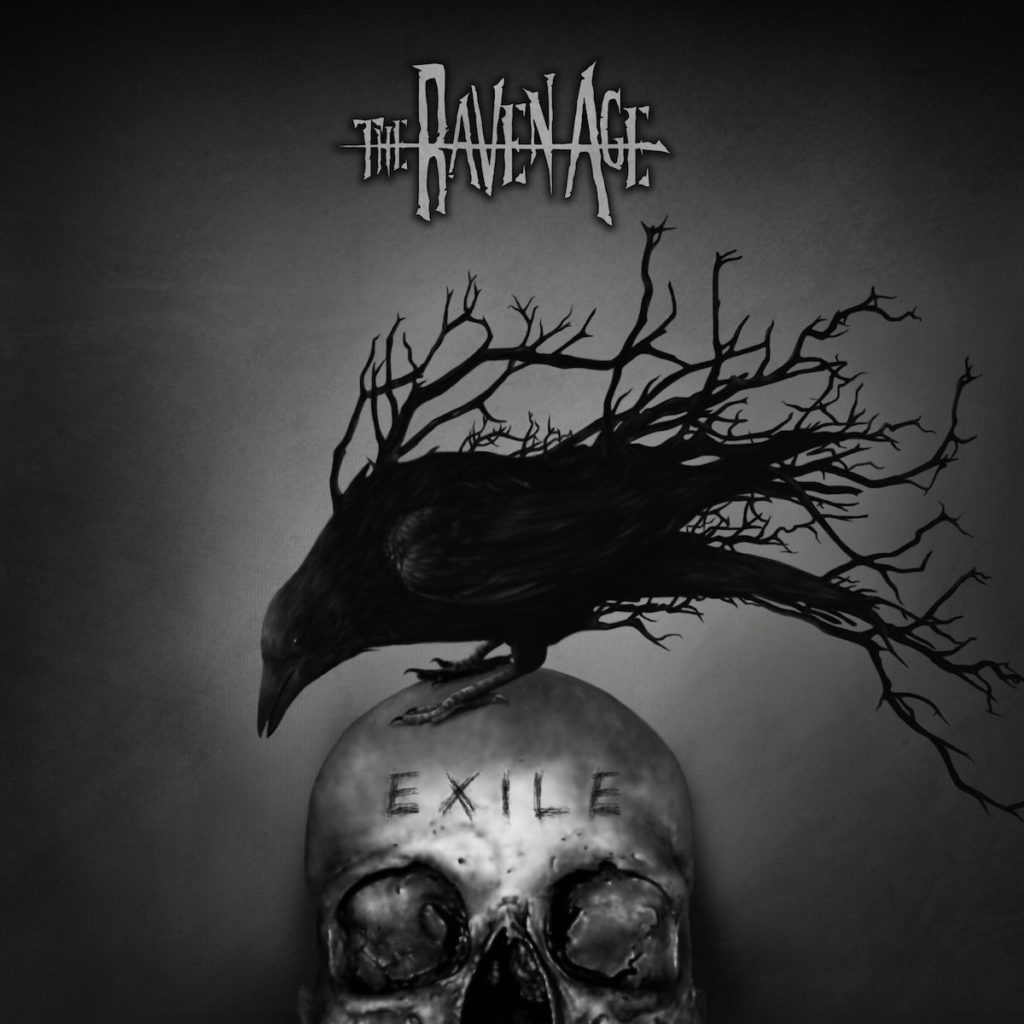
27) Exile, The Raven Age
The Raven Age intrigued me for two reasons. One, they were one of those bands which I checked out because they had a cool album cover on Spotify. Two, their lead guitarist is the son of Iron Maiden’s Steve Harris. Unfortunately, I wasn’t a big fan of their sophomore effort, Conspiracy, but I decided to give them a second chance with Exile. Little did I realize that this was a terrible idea because Exile isn’t a proper, new studio album, it’s actually an acoustic/compilation album. In other words, as someone who was unimpressed by The Raven Age, I was diving into an album explicitly made for existing fans. I am keenly aware that I am not the target audience for this album, but I’m still rather underwhelmed by what the stripped-down songs they deliver here. Sure, there are some highlights, such as the guitar solo towards the end of “Fireflies” and the four live tracks which have been randomly bolted onto the end of the album, but overall this is a forgettable soft rock album that may have torpedoed any lingering interest I had in The Raven Age.
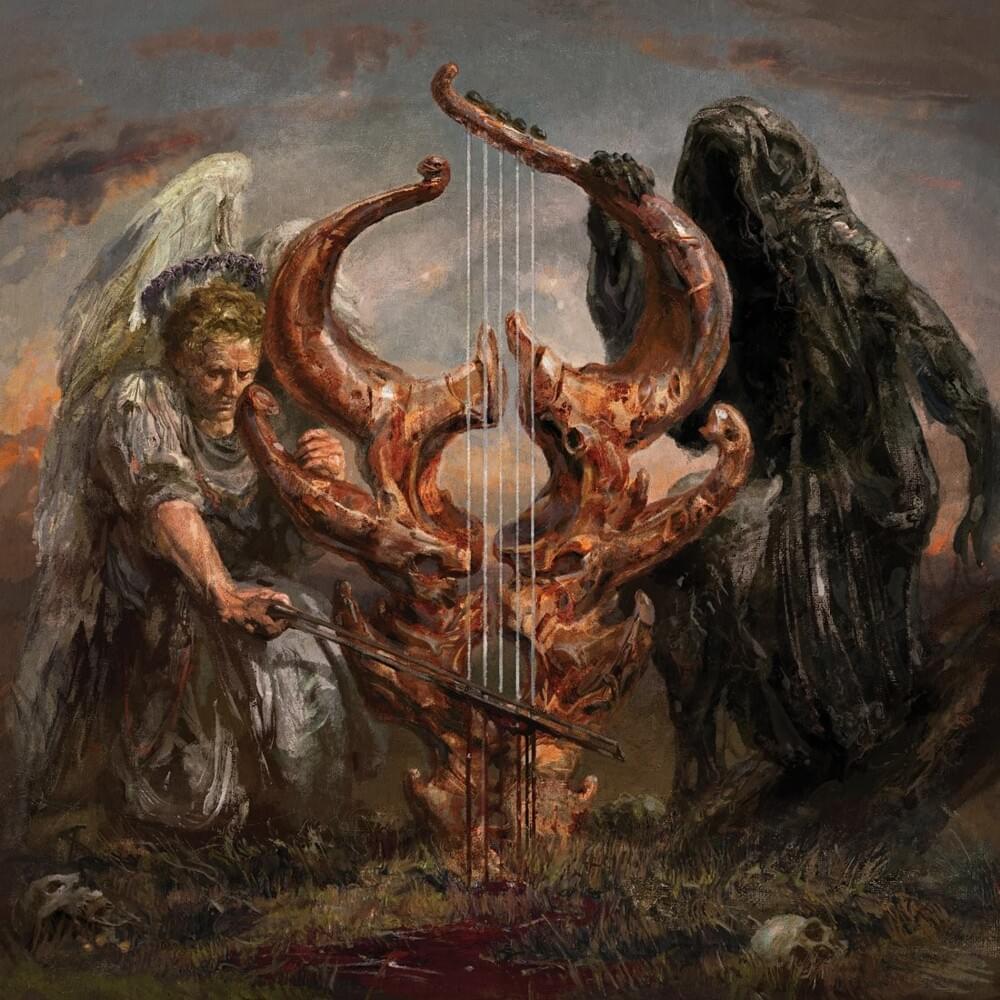
26) Songs of Death and Resurrection, Demon Hunter
Long-time Demon Hunter fans have been accusing the band of softening their sound since at least 2012’s True Defiance, but it has become blatantly obvious in the last few years that the band just doesn’t want to put out more of their signature brand of energetic, aggressive metal. If Outlive didn’t make that obvious then Peace sure did, ditching their sound entirely for stripped-back ballads. That brings us to this year’s Songs of Death and Resurrection, which once again sees Demon Hunter delving into their softer side, this time with an acoustic cover album. Scott Fryberger at Jesus Freak Hideout may have put it best: “It’s the same issue I had with 2019’s Peace, which is just that I don’t listen to Demon Hunter for the ballads. […] Their best work isn’t found in their rock songs, but in their loud, abrasive, pummeling metal.” Look, I tend to enjoy it when a rock/metal band puts out an acoustic album, because it offers a new spin on their usual sound. However, when your band which is traditionally known for their aggressive metalcore puts out three stripped-back albums in a row, an acoustic cover album isn’t a nice diversion, it’s reinforcing the new status quo. Even worse, the tracks chosen for the album were already the band’s stripped back ballads, some of which were already acoustic, such as “Dead Flowers”. So how do they choose to adapt these songs here? Why, by slowing the tempo down to a lethargic crawl, naturally! Granted, on “Dead Flowers” they do do some interesting stuff to change the feel of the track, making it sound like a military funeral song. Most of the other tracks don’t get the same sort of transformative treatment – tracks like “My Throat is an Open Grave” and “Heart of a Graveyard” feel like their original renditions, but with no electronic elements and less energy. The sole new track, “Praise the Void”, is one of the few highlights, perhaps because it was built from the ground-up to be an acoustic track. All-in-all, Songs of Death and Resurrection is another disappointing release from Demon Hunter. If they want to keep putting out these soft rock tracks in their twilight years then more power to them, but I really miss the days of The Triptych when they could make me headbang through the whole album.
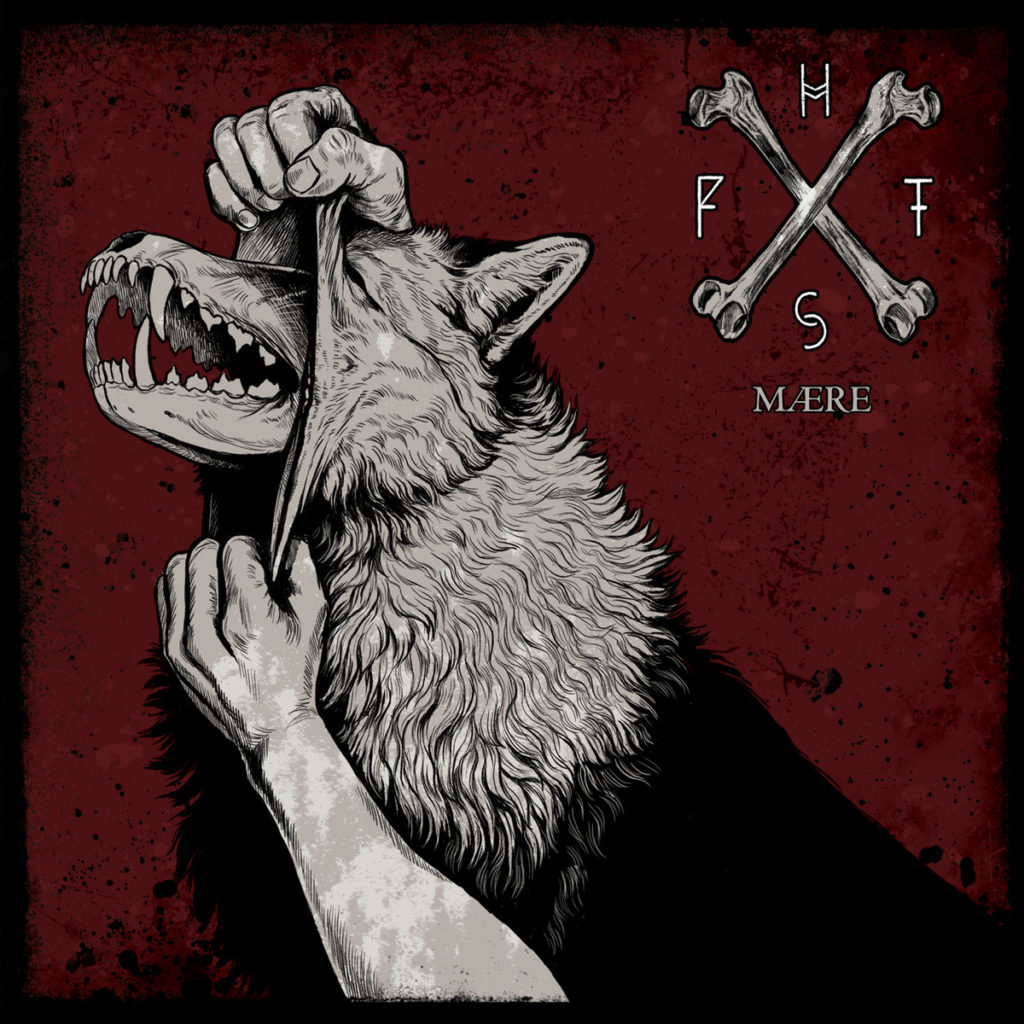
25) Mӕre, Harakiri for the Sky
Surprise, surprise, we’ve got one of those “I saw a badass cover on Spotify and listened to it” picks that happens every year. Mӕre‘s cover reminded me of The Company of Wolves, which has the gnarliest werewolf transformation scene ever put to film, wherein a guy tears his own skin off piece by piece. As for Harakiri for the Sky? Never heard of them before this, so it made for a fresh experience. Unfortunately, I didn’t feel like Mӕre particularly stands out. Their music is quick and heavy, with very harsh, shouted, incomprehensible vocals. Overall they’re very reminiscent of black metal, but a bit less heavy and gloomy… so, like, dark grey metal…? Harakiri in the Sky aren’t doing anything bad, but their music just didn’t stick with me. It also doesn’t help that Mӕre is nearly an hour and a half long with only ten tracks! Holy crap! Every song is anywhere from 7 to 11 minutes long, so even though the tracks are all well-written and performed, the overall package begins to fatigue as it goes along. Like I said, this is certainly not a bad album, but it wasn’t really doing it for me. That said, if you’re curious, I’d recommend checking out “Sing for the Damage We’ve Done” and then decide if you want to go further from there.
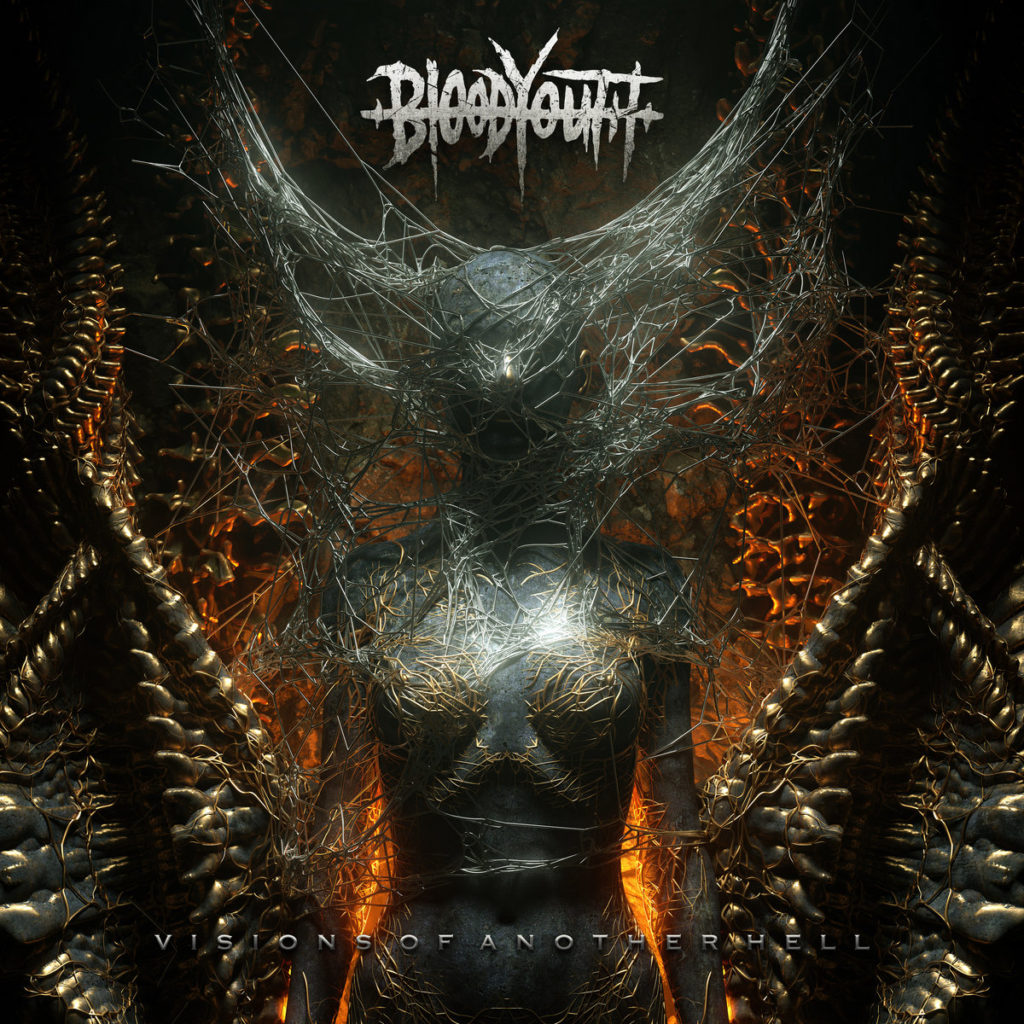
24) Visions of Another Hell, Blood Youth
There’s a dude on Allmusic called Simone Appollini who is notorious among metalheads who frequent the site. The guy listens to like 30 albums a day and leaves ratings and reviews for every single one, so his name shows up on nearly any metal album you can think of on the site. What really makes the guy notorious though is that the vast majority of his reviews are a one (or, if he’s feeling generous, two) stars out of five and his reviews are almost always “this album is a carbon-copy of the band/another band’s previous work”. I’ve actually been mulling over doing a whole article on the guy, because he’s clearly well-versed in music but to a point where he can’t even enjoy it anymore because it’s all so familiar-sounding, like he’s a cautionary tale about the dangers of acquiring too much knowledge. Anyway, the reason I bring him up is because, on occasion, there really are bands whose music does feel like a carbon copy of another band’s… which brings me to Blood Youth and Visions of Another Hell. From the moment this album started it was obvious that Blood Youth’s sound is heavily-indebted to Slipknot, with their heavy, aggressive music, angsty lyrics and screamed vocals sounding just like Iowa or .5: The Gray Chapter-era Slipknot. I am, clearly, a Slipknot fan so this makes Visions of Another Hell at least an enjoyable listen, but as it keeps going it becomes distressingly clear that Blood Youth are only interested in ripping off Slipknot wholesale rather than bringing their own twist to this style. Imitation is the sincerest form of flattery, but it’s ultimately to Blood Youth’s detriment that they don’t deviate more – Slipknot is a nine-piece band, so Blood Youth’s sound is small in comparison and their refusal to break their own ground makes their songs feel insincere, like they’re just trying to fit the formula. To be fair, Blood Youth do very occasionally show glimmers of mixing some metalcore into this sound which would have been enough to make them feel like they were doing their own thing (such as on “Open Window” or “Human Blur”), but these are few and far between. It’s too bad, I do think this is an enjoyable-enough album but the lack of originality really soured me on Visions of Another Hell.
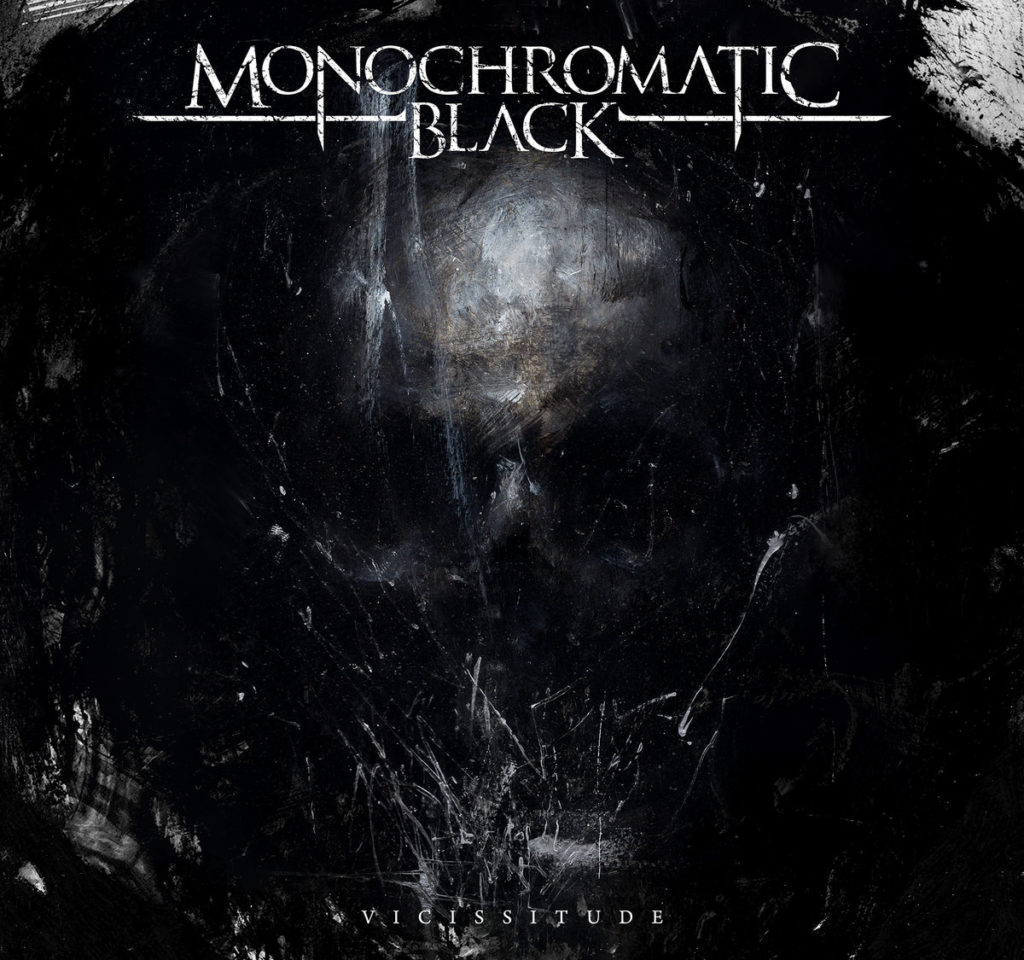
23) Vicissitude, Monochromatic Black
If you know anything about my taste in music (and artwork) then you know why I gave Vicissitude a shot. That album cover is badass. Other than knowing that Monochromatic Black were a deathcore band, I went in blind. What did I think? Well, Vicissitude feels like a scattershot album. Most of the album is punishing deathcore, verging on noise at times, although the band also has a female secondary vocalist who, when she’s allowed to shine, will suddenly turn songs into melodic metal out of nowhere. This is most clear on “Cerulean” and “Disillusioned”, which sound really out of place among the relentless screams and death metal that permeates the rest of the album. All-in-all, Vicissitude just didn’t gel with me, it was an okay experience but if I’m being honest I don’t think I’ll ever listen to it again. That said, you may enjoy it more than I did – you can pick the album up on Bandcamp for $10 if you’re interested.
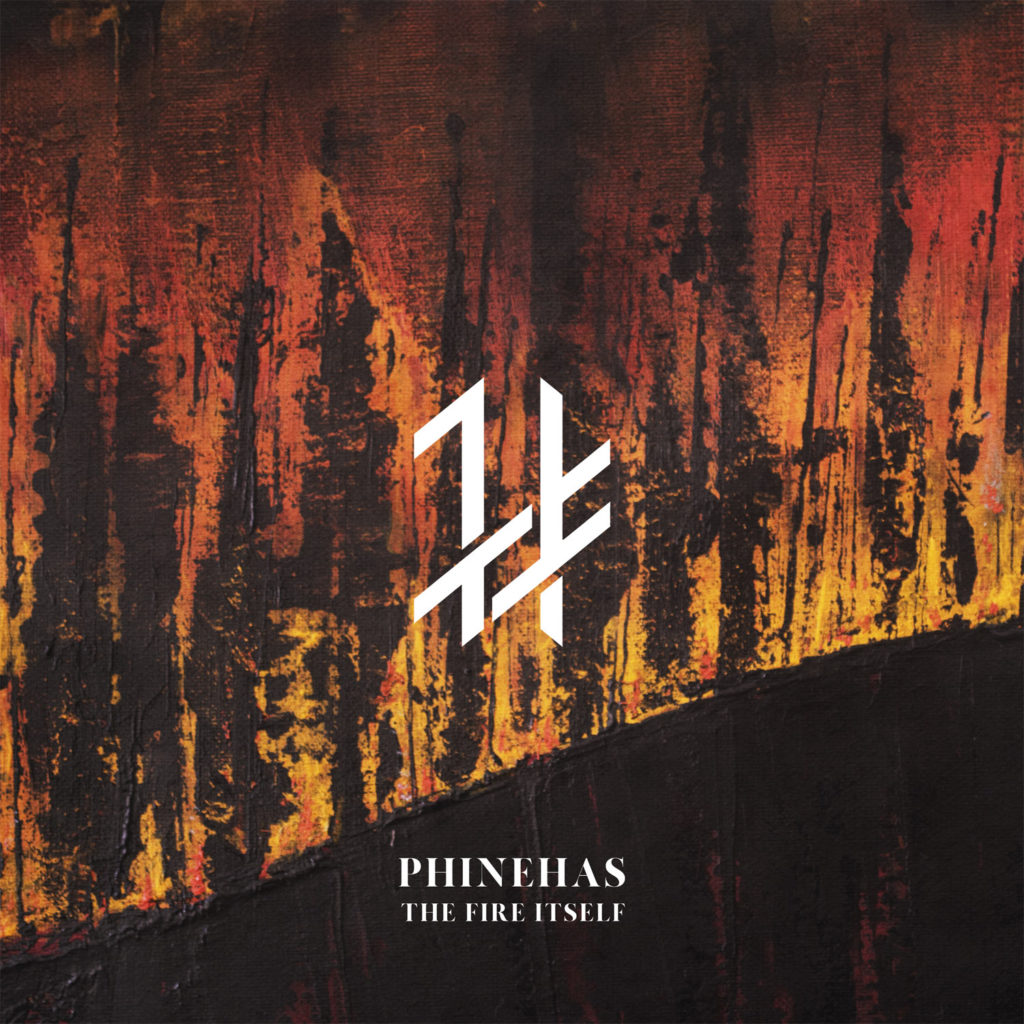
22) The Fire Itself, Phinehas
The Fire Itself made me nostalgic for the days when Weathered Steel was still in operation and I could get a curated look at the Christian metal scene (coupled with a good rage-laugh at every buck-wild fundamentalist advertisement that would play between songs). Phinehas were a staple on the station back then, so I was already somewhat familiar with their aggressive metalcore style and sound before going into The Fire Itself. If you’re into metalcore then The Fire Itself is certainly enjoyable – Phinehas are full of energy and aggression here which is exactly what you’d expect from this kind of music. That said, the album reminds me why, when I listened to Weathered Steel, I gravitated to bands like A Feast for Kings and Impending Doom rather than Phinehas: they just don’t feel all that distinct. That’s not really meant to be a knock against Phinehas, I think they’re talented and this is a fairly good album, but the Christian metalcore subgenre is quite expansive and this album exemplifies what I would think of if I was to picture typical Christian metalcore. It’s not like I dislike this kind of sound either, but metalcore bands like Bleed From Within, Bad Omens or The Wise Man’s Fear resonate with me far more because they feel far more distinct. I feel like The Fire Itself is worth giving a shot if you are into aggressive metalcore, but if your tastes are like mind then you may find that it fails to carve a place for itself in a crowded subgenre.
Oh, fun bonus fact, Phinehas have had so many lineup changes over the years that there are zero founding members still with the band to this day!
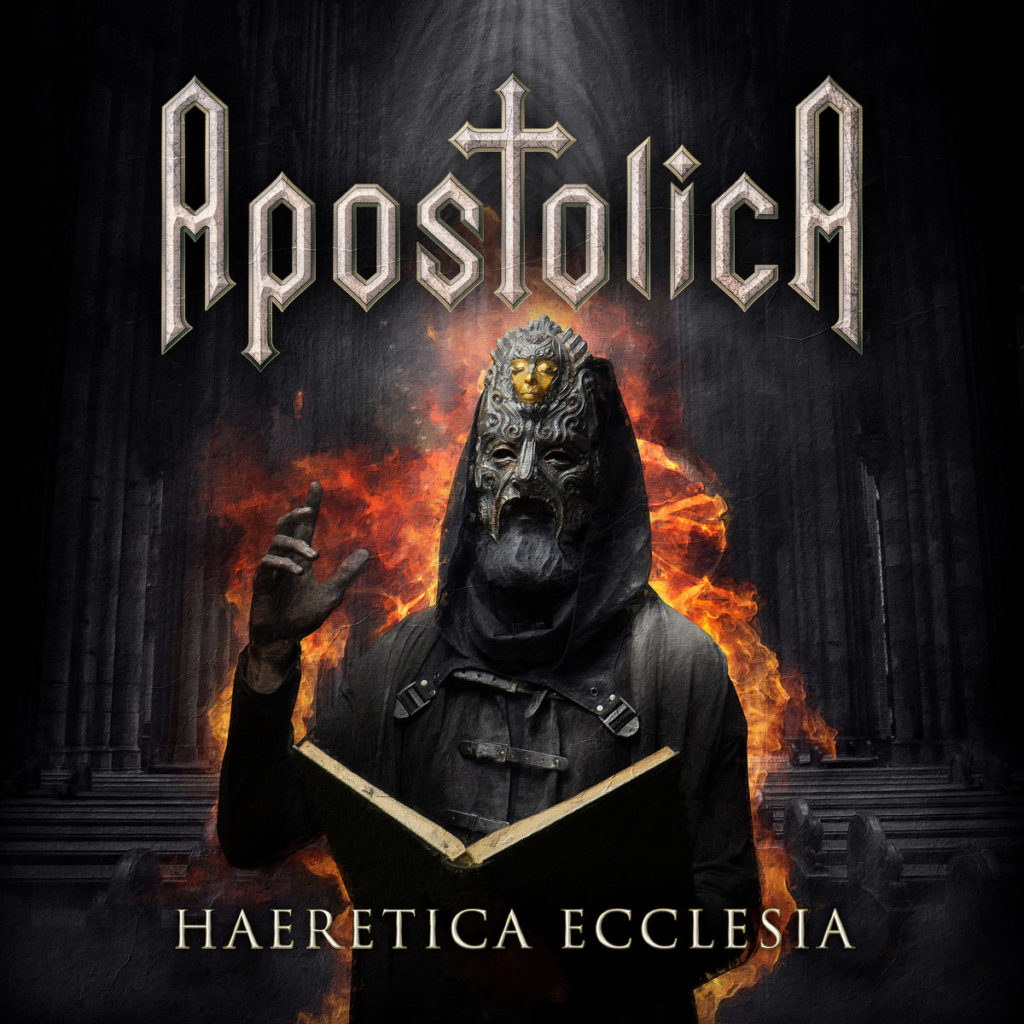
21) Haeretica Ecclesia, Apostolica
As I’ve said in the past, religious fanatics are one of my favourite types of characters, so when I saw Apostolica and Haeretica Ecclesia I knew that I had to give them a shot. That said, I’m also a big Powerwolf fan, who already have made a considerable name for themselves the “dark, religious aesthetic” metal market, so I was curious to see how they would stand out. The answer to that is… they don’t really. Right off the bat Apostolica gives off Powerwolf-wannabe vibes with their latin chants, choirs, use of organs… hell, even their riffs sound the same at times and the fact that both bands are using the same themes of being dark, religious heretics makes Apostolica feel like even more of an imitation. It also doesn’t help that Powerwolf is fronted by Attila Dorn’s soaring, operatic vocal style, and Ezekiel* struggles to live up to that. The main ways that Apostolica try to differentiate themselves are by cutting out the “creatures of the night” and the tongue-in-cheek humour of Powerwolf in favour of playing the heretical religious themes straight. What we get as a result is basically just standard power metal with some Catholic flavour thrown in. Haeretica Ecclesia is an inconsistent mess in many ways. “Sanctus Spiritus” feels like discount Powerwolf off the bat, but then we get strong efforts like “The Sword of Sorrow” and “Thanatos” which stand out on their own merits. Unfortunately, the entire back half of the album feels half-assed and mediocre. That said, “The Sword of Sorrow” and “Thanatos” were great enough that I have some optimism that the band may be able to pull off a great, more-distinct sophomore effort, but as it stands Haeretica Ecclesia is a rough debut for the band.
*Playing up the theatricality of the band, its members are all unknown, going by single-name aliases (Jonas, Malachia, Isaia and Ezekiel) and wearing masks at all times. Their label claims that they are “some of the finest musicians of the international heavy metal scene”, whatever that actually means.
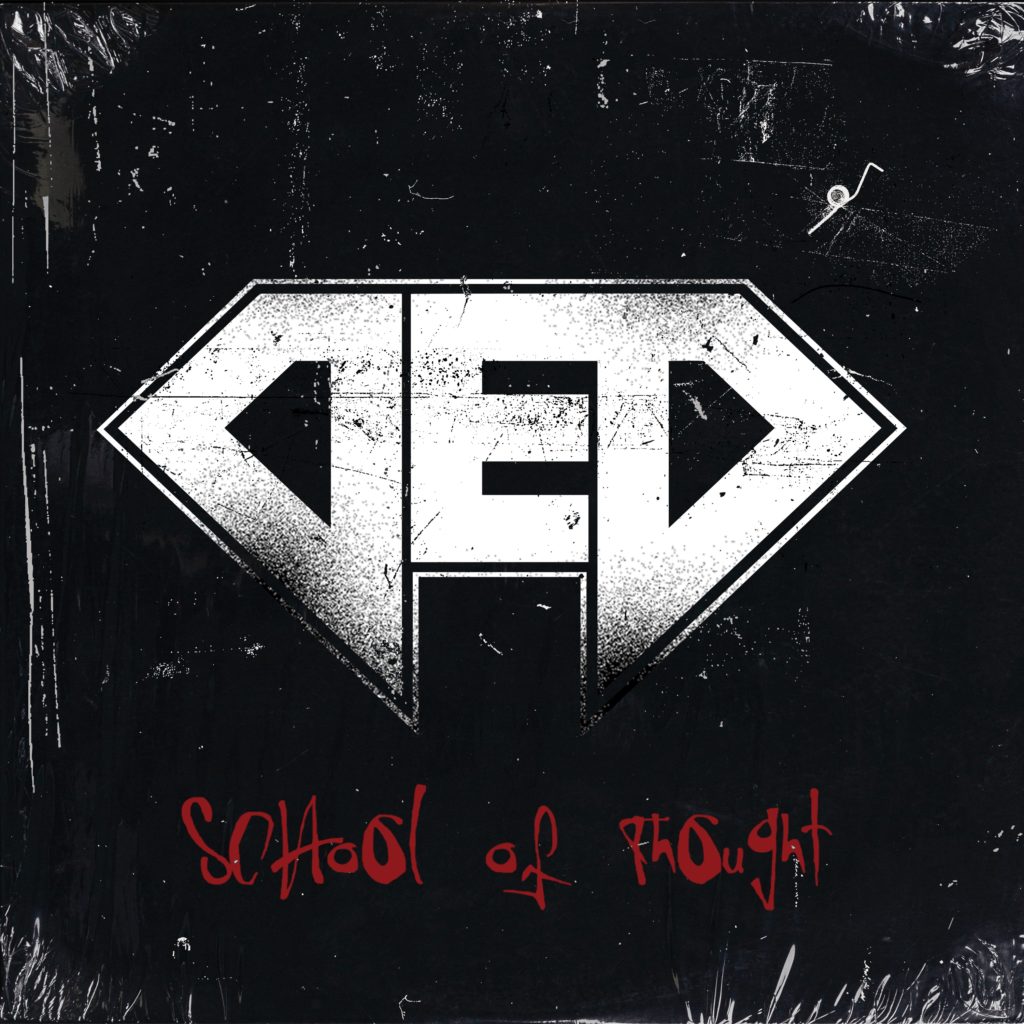
20) School of Thought, DED
DED’s debut album, Mis•an•thrope, was basically a modern-day version of early 2000s nu metal with its heavy, aggressive sound and overflowing with blistering, uncontrolled rage. The band’s long-awaited sophomore effort, School of Thought, consciously dials back some of that angst towards the world and aims to be more introspective at times. Blind rage is replaced with sullen brooding, such as on the opening track “Ghost”, which feels like a Breaking Benjamin track and is clearly aiming to be a radio-friendly hard rock song, while “Kill Beautiful Things” feels like a sequel to Mis•an•thrope‘s one introspective track, “Beautiful”. That’s not to say that DED don’t cut loose and bring the aggression though, far from it. “A Mannequin Idol” is a blistering track and feels like old-school Korn at times, while the anger in “Parasite” feels totally justified and “Persona”‘s plea to “Stop making stupid people famous” is sobering. That said, DED’s cover of “Love Song” featuring Maria Brink (who is dating DED frontman Joe Cotela) doesn’t work for me at all. It’s got an industrial sound to it that gives it this eerie vibe, but the lyrics don’t make a lot of sense when put to this music in my opinion and comes across more like trying to be creepy than actually creepy. Overall, School of Thought is a fine evolution for DED. It doesn’t hit nearly as hard as Mis•an•thrope, but there’s some clear growth going on here which make me curious to see where DED are going to go in the future.

19) Dear Monsters, Bad Wolves
Bad Wolves have been one of my favourite bands of the last few years, with their first two albums being in perennial rotation for me. However, my interest in the band was soured in 2020 when it came out that lead singer Tommy Vext was a die-hard, Trump-loving Republican, which only became worse and worse as he spoke out against Black Lives Matter (in case you’re unaware, this is made all the worse by the fact that he is a black celebrity) and started spouting Qanon conspiracy theories. It all came to a head when Vext quit the band (or possibly was pressured to do so) and was replaced by Daniel “DL” Laskiewicz. Vext alleged that this was due to him being censored for being a conservative, whereas the band tastefully kept quiet until Vext’s loud mouth caused them to reveal that he was kicked out for being verbally and physically abusive. Vext didn’t help matters by becoming more and more deranged, to the point where he went on tour as “Tommy Vext and The B@d W8lv3s”. Suffice to say, there has been some serious drama surrounding the release of Dear Monsters and given the circumstances I was really hoping that the transition from Vext to Laskiewicz would go smoothly – after all, Vext is clearly the asshole in this situation and I’d hate to see the guy getting more ammunition to disparage the band with.
…unfortunately, while Dear Monsters is definitely still Bad Wolves, it feels like the band is at a crossroads. Laskiewicz sounds quite similar to Vext, but brings his own distinct style. It doesn’t feel like he’s just aping the previous vocalist. Meanwhile, the rest of the band sounds as solid as ever, so I don’t think that it’s an issue where Vext was the key creative spark. However, the music here is just less interesting and feels less inspired than the best tracks on the band’s last two albums. Whereas Disobey felt like it was throwing every musical style at the wall to see what would stick, Dear Monsters is very focused on radio-ready rock, with just a dash of metal remaining. We do get some heavy-hitters such as the delightfully energetic “On the Case”, but the heavy stuff is outnumbered by softer rock tracks such as the clearly-designed-to-be-the-hit-single “Lifeline”. For the most part, these tracks are decent enough (except for “Comatose”, whose opening lines/chorus lead-in make me cringe every time), but they lack the energy and bite of their previous work. On the other hand, there’s only a single break-up song on this album, whereas there were like 5 on N.A.T.I.O.N., so at least the band is spreading their wings even if the results don’t resonate with me that much. Hopefully this is just a transition period for Bad Wolves, because if their next album underwhelms as well I think it would deflate any interest I have left in the band.
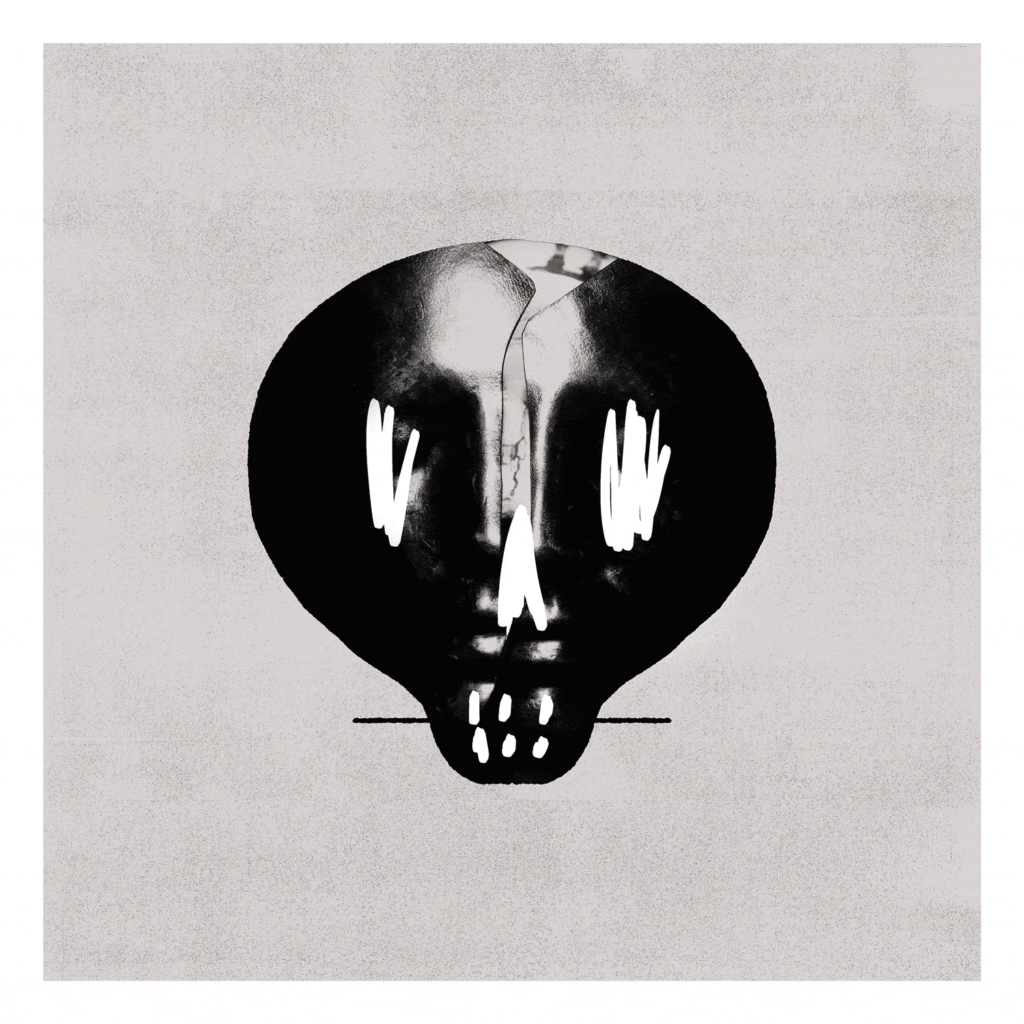
18) Bullet for My Valentine, Bullet for My Valentine
Bullet For My Valentine are one of those bands that I’m familiar with because they were in every game soundtrack in the mid-2000s to the early-2010s. However, I didn’t really get into them til the last couple years where I found their brand of angsty and energetic metalcore infectious. The band really hit a peak in 2010 with Fever and then immediately plummeted off a cliff with Temper Temper. Since then, every subsequent album has been a bit better than the last but they’re still nowhere near the quality of their heyday… which brings us to their 2021 self-titled album (and, just to be extra confusing, their debut EP was also self-titled). Bullet for My Valentine continues the band’s trajectory of putting out solid metalcore, but it’s still a shadow of the band’s best efforts. The main differentiators here are that Matt Tuck’s vocals have gotten harsher with a lot more growling and yelling than in previous albums. There are a couple really good tracks here, particularly “Knives”, “Can’t Escape the Waves” and “Shatter”, if you’re interested then I’d recommend checking these ones out and deciding if you want to give the rest of the album a shot. For what it’s worth, Bullet for My Valentine is fine but I don’t expect that I’ll be an album I come back to much (if ever) in the future.
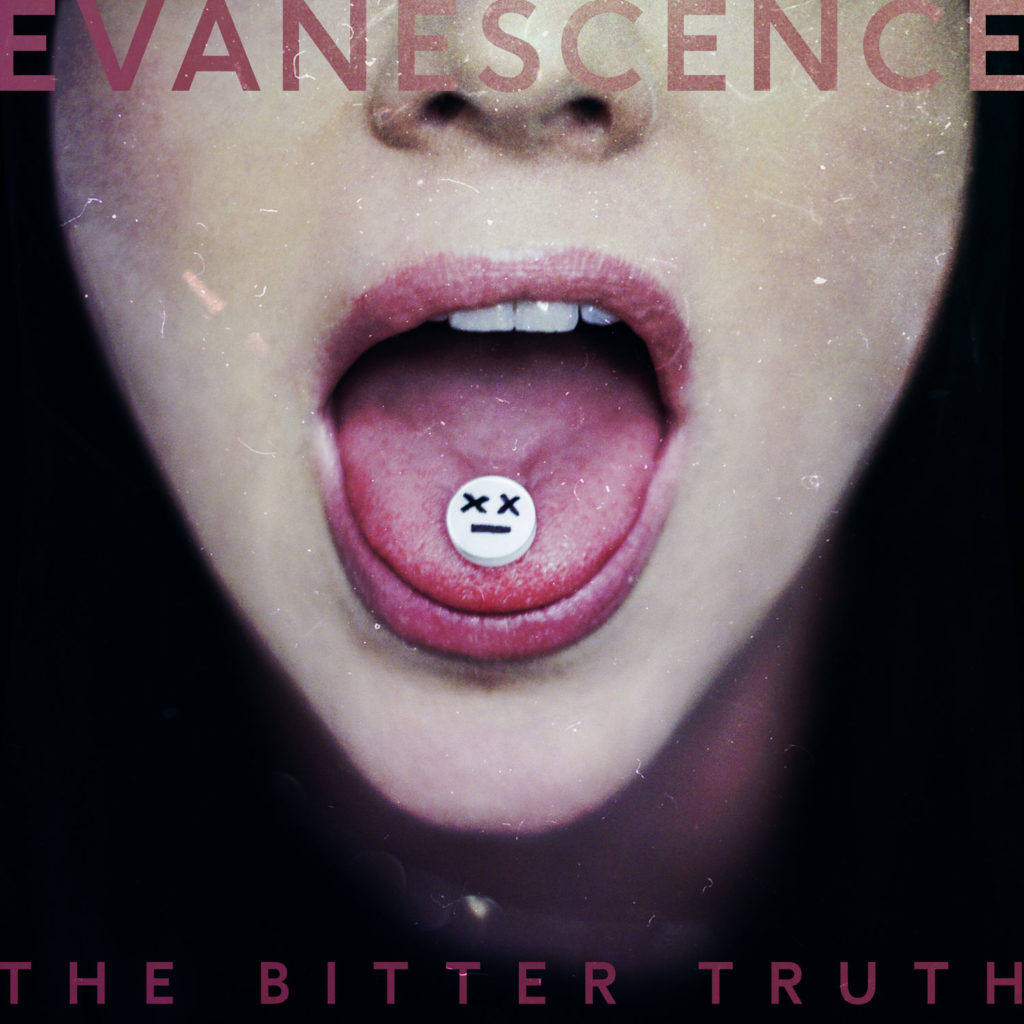
17) The Bitter Truth, Evanescence
Considering how huge Evanescence were back in the early 2000s, it’s wild to me that they don’t have more albums – The Bitter Truth is only their fourth original studio album and their first new album in 10 years. For my own part, I had a very brief Evanescence phase in the early 2010s, but fell out of them pretty quickly. There’s a reason this band has become a meme – their lyrics tend to get so angsty that’s hard to take them seriously. That said, they do have some catchy songs and Amy Lee’s soaring, operatic vocals have carved the band their own place within the hard rock/alt metal landscape. I had no idea what to expect from The Bitter Truth, only that I felt like I had to give it a fair shake.
Ultimately, I’m kind of torn on The Bitter Truth. On the one hand, fans are going to love it – I can see tracks like “Broken Pieces Shine”, “Wasted on You” and “Use My Voice” slotting into the band’s live setlists seamlessly and becoming new staples going forward. Then there’s tracks that tread totally new ground for the band, particularly “Yeah Right” which sees Evanescence drawing on jazz and swing influences. I was even rather impressed that Evanescence are still dedicated to their nu-metal influences, as The Bitter Truth is no less heavy than their previous albums. All that said, The Bitter Truth isn’t going to convert any skeptics – I went into the album pretty meh about Evanescence and I came out able to acknowledge that it’s a decent rock album, but not really one that I cared all that much about. I’m probably being a bit hard on it to be honest, as it did review fairly well, but I’m sorry, it just didn’t resonate with me. I’m sure there’s an audience out there that’s going to love this thing, but unfortunately I’m just not among that number.
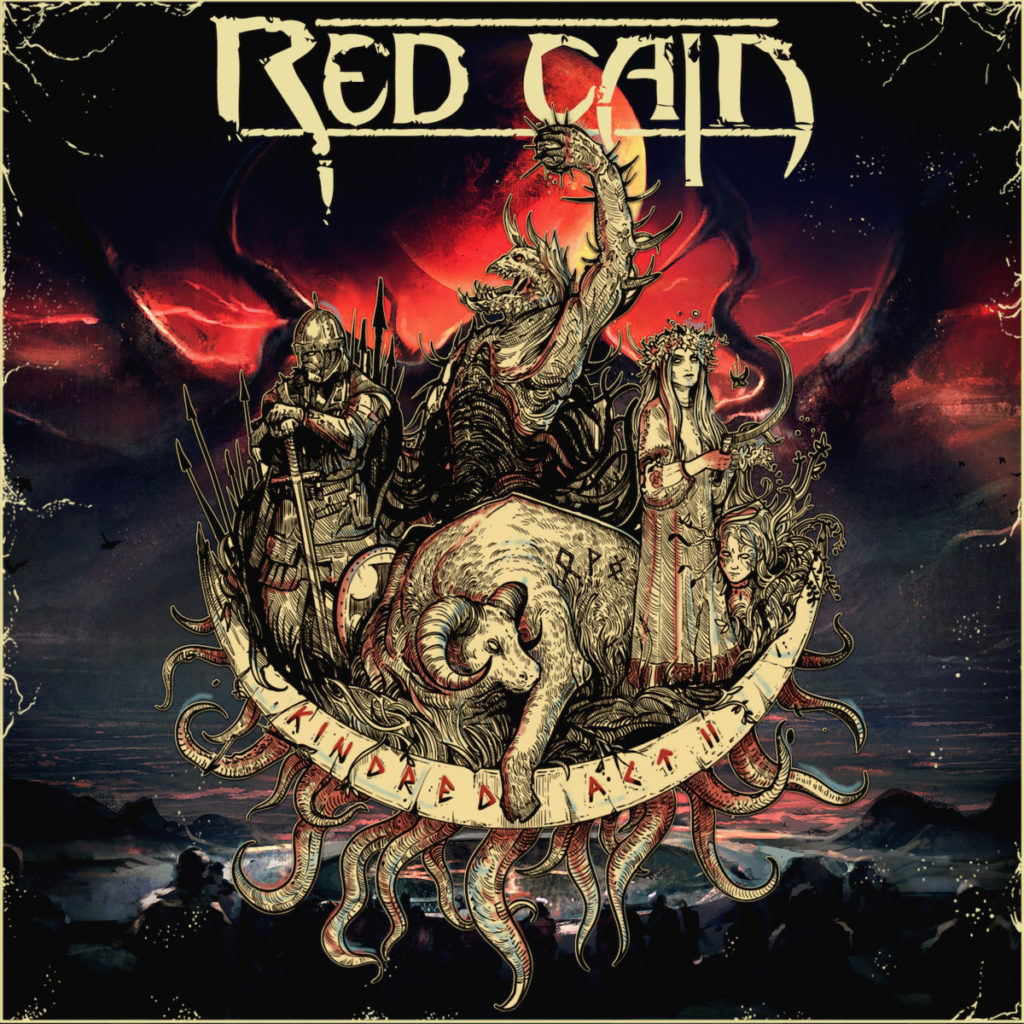
16) Kindred: Act II, Red Cain
True to its name, Kindred: Act II picks up right where last year’s Act I left off, providing us with more epic fantasy power metal to enjoy. Also appropriately, Act II feels like the darker middle chapter compared to its predecessor and sees Red Cain being a bit more experimental with their sound. Sure, tracks like “Kindred” and “Baltic Fleet” are straight out of their usual playbook, but then there’s “Precipice of Man” which is slowed down and almost ballad-like for the first minute before becoming one of the heaviest tracks in the band’s catalogue. Then there’s “Varyag and the Shrike”, which feels like an evolution of Red Cain’s “Snakebouquet” and is the highlight of the album in my opinion. As I more-or-less expected, it’s more Kindred, and considering that it was one of my favourite albums of last year that’s not a bad thing.
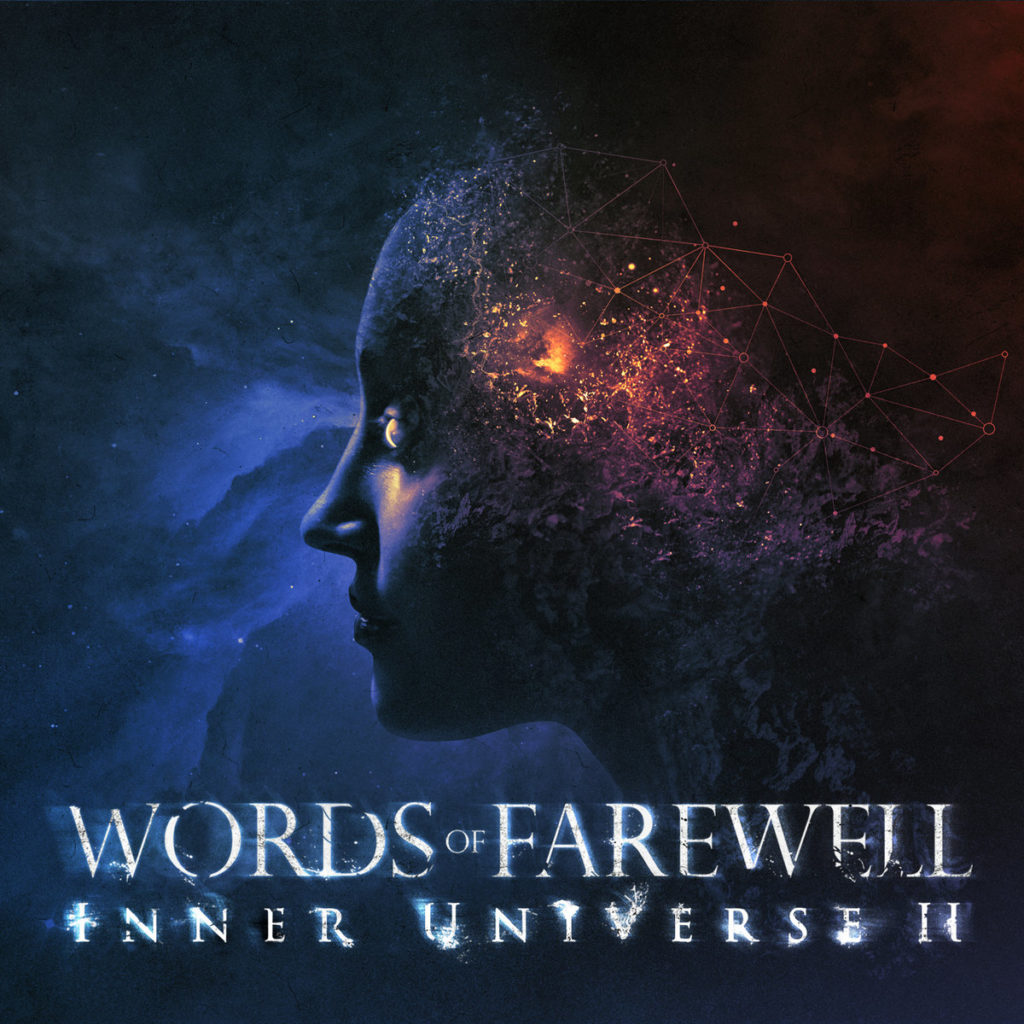
15) Inner Universe II, Words of Farewell
I got an email alert that Words of Farewell had put out a new EP and almost immediately jumped at it. Funnily enough, I was actually the first person on Bandcamp to get Inner Universe II. As the title would imply, this is basically more of the same from Words of Farewell (which shouldn’t be surprising because they’ve been mining the same soundscapes for nearly a decade now). However, I quite enjoy their music so that’s not really an issue for me. If you’re into fast, aggressive melodic death metal (or progressive metalcore, which I still feel is a more apt descriptor for Words of Farewell’s sound), then you’ll probably enjoy Inner Universe II… and every other song Words of Farewell have put out for that matter.

14) LIVE, Bad Omens
The problem with these annual countdowns is that I always, without fail, discover a band who released some of my favourite music of the year after I’ve already published my list. Bad Omens are one of those bands. 2019’s Finding God Before God Finds Me would have easily taken a top 3 spot on that list. Its polished and surprisingly-commercial metalcore sound really resonated with me and its themes of religious rebellion and soul-searching have kept me hooked on it through the very end of 2020 and into 2021. LIVE is their first album that’s come out since then and, as its name implies, it is a live performance of some of the band’s bigger tracks. Right off the bat, the band came swinging with “Glass Houses” which, while not as polished as the studio release, still works well due to the band’s energy. Unfortunately, Bad Omens then spend most of the album on softer, quieter rock songs. While I like songs like “The Worst in Me” or “Never Know”, by the time they got to their third soft song in a row I was itching for some actual metalcore. It also doesn’t help that frontman Noah Sebastian’s vocals can sound really strained at times on these tracks. However, Bad Omens entirely redeem themselves with the finishing one-two punch of “Dethrone” and “Mercy”. “Dethrone” is a brutal track, which builds in tension and then just explodes with a death growled “YEAHHHH!” The song is just as good, if not better, live and brings back the energy which was sorely missed all this time. The album then ends on “Mercy”, my favourite Bad Omens song, and easily their best fusion of their quieter and heavy sides. It’s a fantastic close to the album, but you’re definitely left wanting more after these two tracks. The album itself is only about half an hour long, which I can only imagine is because Bad Omens aren’t really headlining any live shows yet, so they’re going to have very limited setlists. LIVE makes for an interesting sampler for fans and newcomers, but honestly I feel like the best way to experience this band would be to listen to their two studio albums. Maybe consider checking out the last two tracks here though to get yourself hyped up.
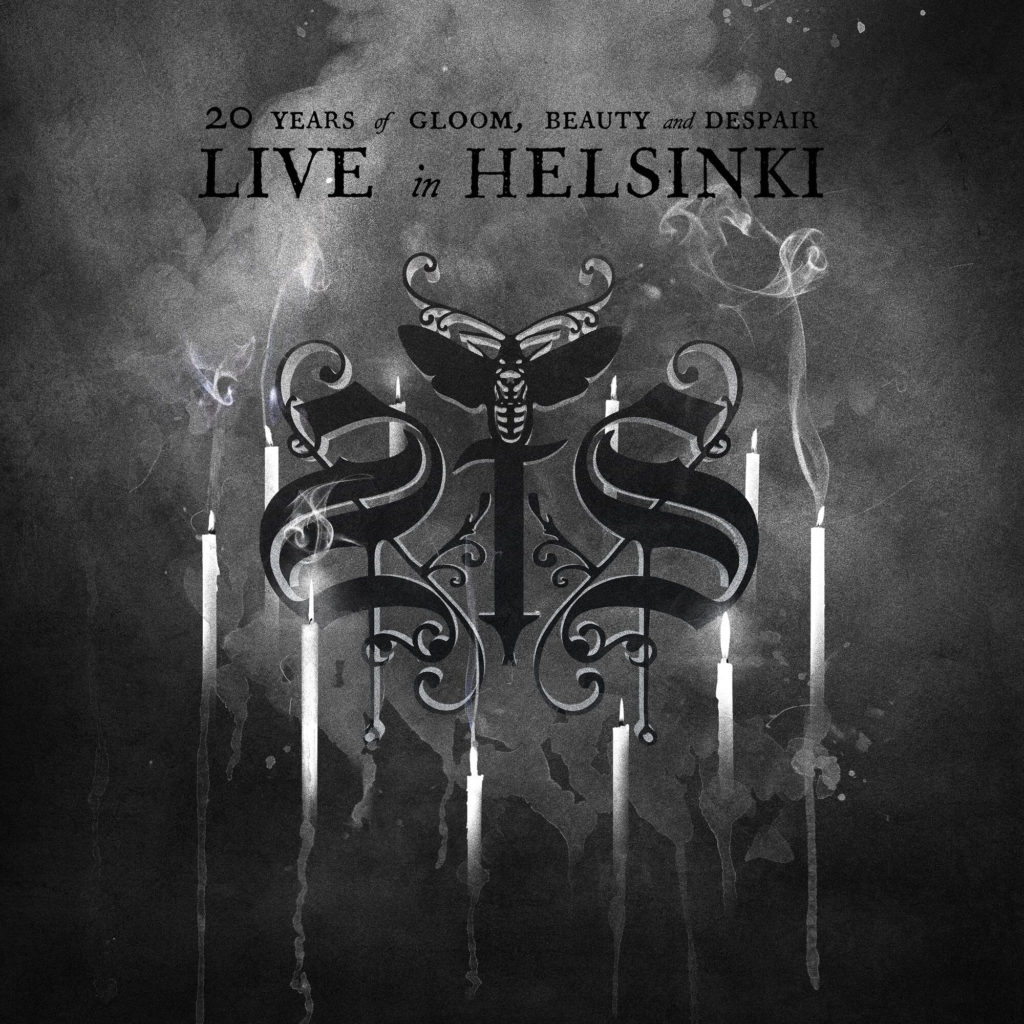
13) 20 Years of Gloom, Beauty and Despair – Live in Helsinki, Swallow the Sun
Remember how I said Bad Omens’ Finding God Before God Finds Me would have been a top 3 pick for 2019 albums? Well, if I had listened to it in 2019 then Swallow the Sun’s When a Shadow is Forced into the Light would likely have taken my #1 spot. I am enthralled by that album’s melancholic beauty, it’s one of those albums that needs to be experienced from start to finish in one sitting. Like Bad Omens, Swallow the Sun have also put out a live album, this one in celebration of their twenty year anniversary as a band, where they put on a mammoth, two-hour show. The first half of the show was a full performance of “Beauty”, the acoustic, second disc from their 2015 triple-album Songs From the North I, II & III, whereas the setlist for the second half of the show was voted by fans.
“Beauty” kicks off the live album in a low-key, sombre and atmospheric fashion. Given that the songs in this half of the show were already very stripped-back, they translate very well to a live setting, although Mikko Kotamäki’s clean vocals aren’t quite up to task at times (they get particularly strained on “Away” and “Autumn Fire”). It makes this half of the show a bit of a mixed bag, and it also doesn’t help that “Beauty” worked as well as it did in Songs From the North because it was interspersed between the melodic doom metal of part one and the brutal, funeral doom metal of part three; when it has to hold everything up on its own it can start to drag. Certainly not bad, but not what I’m looking for from a Swallow the Sun live album.
However, when the fan-voted setlist starts, that’s when 20 Years of Gloom, Beauty and Despair really kicks off. “Lost & Catatonic” sets the mood right away, with the transition to harsher vocals happening seamlessly, with no vocal straining to be heard and with the heavier tone bringing far more energy. From there it goes into “Empires of Loneliness” which was one of the most intriguing tracks for me in this live album. As one of the funeral doom tracks on Songs From the North III I didn’t really care for it before, but hearing it live gives it a whole different perspective that I appreciated far more. In a live setting it feels far more epic and brutal, while bringing that haunting and melancholic feel which the best Swallow the Sun songs embody. “Empires of Loneliness” was an unexpected pick, but this fan-voted set has some truly esoteric choices which really surprised me (usually when you hear a “fan-voted” setlist for any other band you’d expect to hear a bunch of fan-wank tracks). Most surprising to me was freaking “Plague of Butterflies, Pt. II” from their 2008 EP of the same name which was written for an extreme metal ballet that never got off the ground. There’s some great variety here across Swallow the Sun’s entire career and running the gamut from epic, moody, quieter tracks to the brutal and depressing. This disc fires on all cylinders and it really makes me wish that Swallow the Sun had struck a little more tonal balance in the first half of the show. Ahh well, regardless 20 Years of Gloom, Beauty and Despair is well-worth a listen for fans of Swallow the Sun, people who are curious about their music and fans of extreme metal and is a worthy celebration of the band’s career thus far.
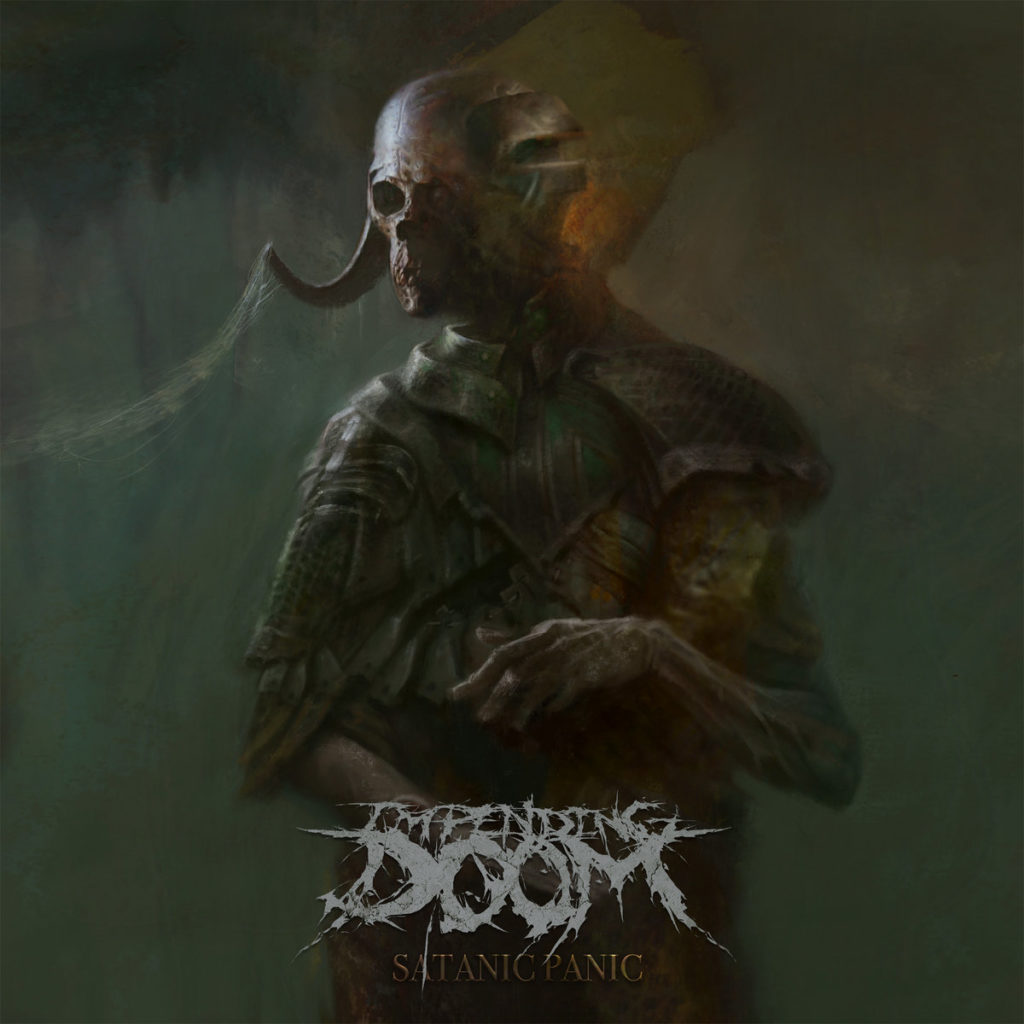
12) Hellbent, Impending Doom
As much as I love their brand of crushingly-heavy and energetic deathcore, Impending Doom have become something of a problematic favourite of mine. In case you’re unaware, they are unabashedly Christian, and I’d put them up there as one of the best Christian metal bands. However, considering how many of their songs complain about the evil in culture and their at times ugly worldview, I can’t help but feel like any day they could come out with an awful song or statement which could tank all my interest in the band. Thankfully that day hasn’t come yet, because Hellbent is another really solid and catchy release.
The one somewhat problematic track here is the opener, “Satanic Panic” (which, apparently, is also the name on the album art…?). Given that the Satanic Panic was a moral panic caused by hysterical Christians which ruined several innocent lives, it seems like a pretty tone-deaf move for a Christian band to go around slinging that term but meaning it in full sincerity. Again, I’d half expect Impending Doom to start slinging Qanon talking points, but thankfully I didn’t get any of that here. Thankfully the rest of the album didn’t get my hackles up as much and every track on here is Impending Doom’s signature brand of brutal metal. The band has always been really good at making their tracks catchy and make you want to scream along and Hellbent is no exception. “New World Horror” and the title track in particular are highlights. The band isn’t doing anything particularly new, but they’re doing it well which is what’s most important.
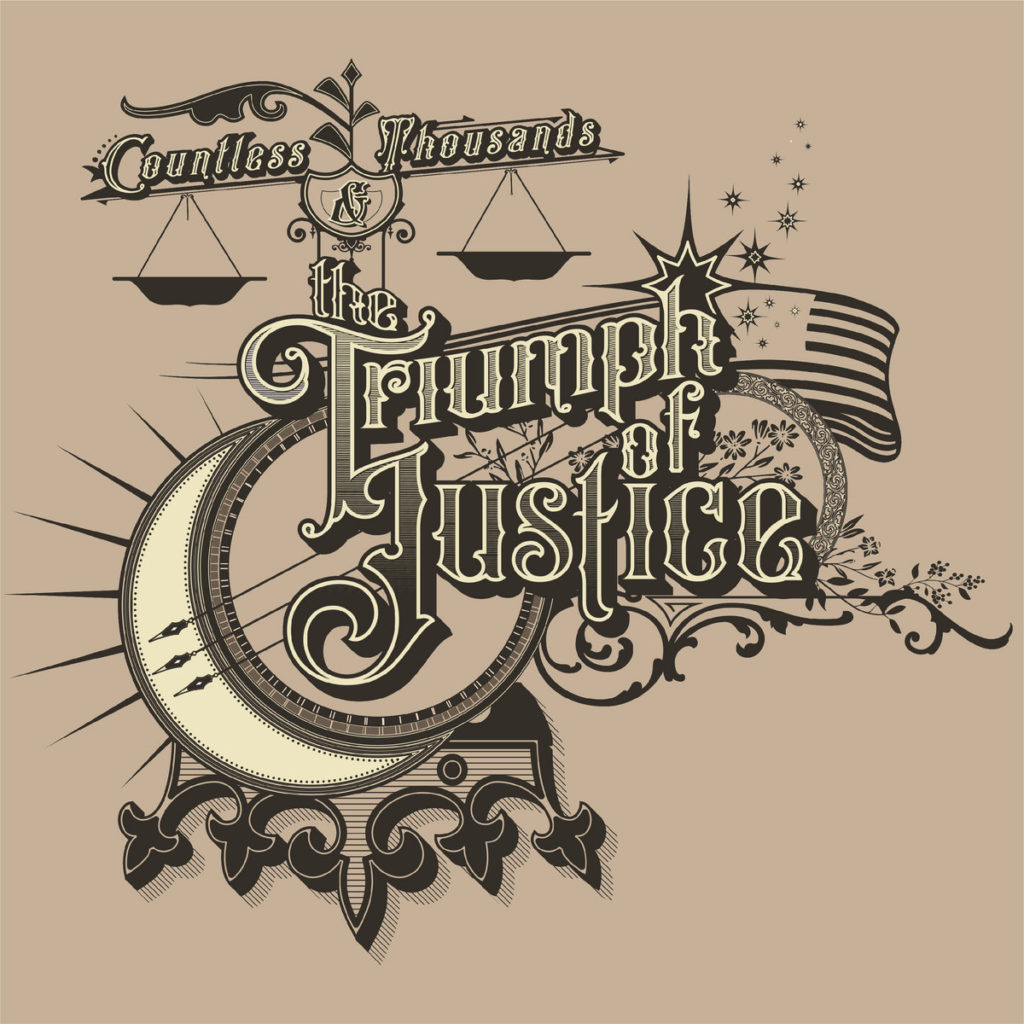
11) …and the Triumph of Justice, Countless Thousands
Countless Thousands have been cooking up a triumphant, anti-fascist punk rock opera for years now and it’s a stroke of luck that it came out when it did. In the wake of the fascist riot at Capitol Hill and the Biden inauguration, not to mention after four turbulent years of Trump, we were starved for something triumphant and that’s just what Countless Thousands deliver with …and the Triumph of Justice. Countless Thousands take their signature brand of enthusiastic, nerdy punk rock and infuse it with a timely political message which makes the album feel relevant. The political aspirations of the album are clear right from the outset as the opening title track is anthemic and clearly pays homage to “The Star Spangled Banner” before launching into “Game Change”, which opines about how little meaningful difference there is in Americans’ political choices, “The Rat”, which is blatantly about Michael Cohen, and “Fat Cat”, which is about how the rich will fuck over everyone for another dollar. For all the complaining I do about bands being wishy-washy with their political messages, it’s refreshing to see a band making an unapologetic stand. That said, Countless Thousands aren’t above using politics as a springboard for a joke, such as the hilarious “Space Nazis Must Die!” which recounts the tale of Countless Thousands travelling to the moon to kill Astro-Hitler or “Lazar Wolf” which, as far as I can tell, is about a goddamn LAZAAAAAAAR WOOOOLF! There’s also an adorable running storyline about frontman Danger van Gorder’s daughter and how she will one day inherit the world, giving the album a surprisingly poignant justification for its political leanings.
Of course, politics can only take an album so far, but luckily Countless Thousands have put together some real bangers on …and the Triumph of Justice. Every track feels unique: the aforementioned “Space Nazis Must Die!” is an epic, humourous treat, “Solidarity Forever” is a fantastic, surprisingly-patriotic socialist gospel track that pays homage to the “Battle Hymn of the Republic”, “Fat Cat” sounds like a swingin’ Disney villain song, and “Can’t Quit (An Orchestra on the March)” slowly builds up into a triumphant anthem for our generation – life sucks but we have to keep working away to make it better for those who come after. The whole album works really well and even on some of the weirder tracks (like “Murder Assassins from the Future”), Countless Thousands’ humour and energy is infectious. I’m also happy to say that the production quality on this album is great, which I wasn’t really expecting after the lackluster quality on Pretzel Champions and the fact that this album was recorded in the bandmembers’ kitchens! All-in-all, …and the Triumph of Justice is another winner for Countless Thousands.
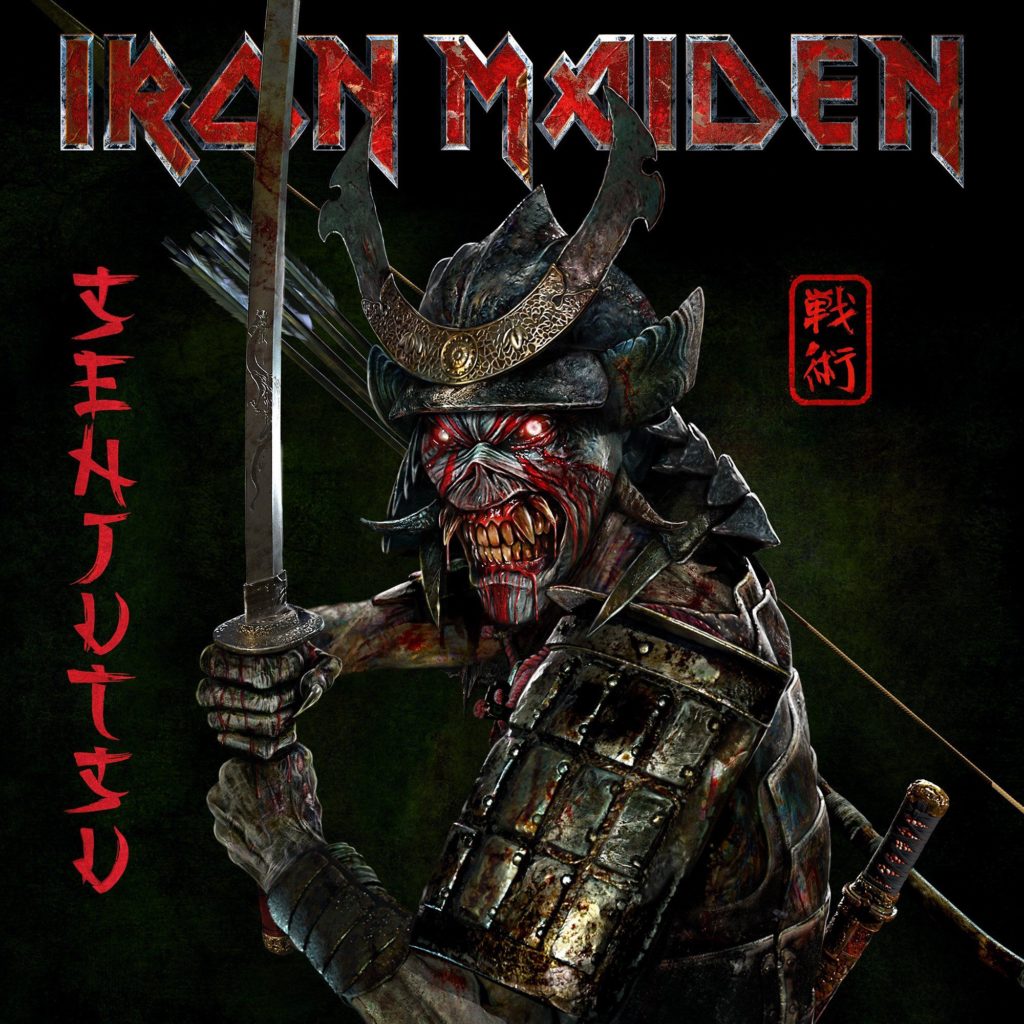
10) Senjutsu, Iron Maiden
Iron Maiden are, without a doubt, one of the biggest names in metal and every new release of theirs is an event worth paying attention to. Even if they undoubtedly peaked in the 80s, they’ve still had moments where they’ve recaptured their glory days, such as Brave New World, have continued putting out solid albums throughout the 2000s and 2010s, and even their most forgettable works tend to have a few gems that stand out. With that said, Senjutsu fits into the trail Iron Maiden have been blazing for the past two decades – good metal, more of the same we’ve been getting for the past forty years, but not as good as their classic albums, so it feels a bit unmemorable as a result. Don’t misunderstand me, there’s nothing really wrong with Senjutsu – I found myself enjoying tracks like “Stratego”, “Lost in a Lost World” and the title track, but I just wasn’t excited by it. You can tell this is an album made by professionals who are extremely comfortable with their craft and know what they’re doing, but after the novelty wears off Senjutsu is going to be like The Book of Souls or Dance of Death – a Maiden album that’s going to constantly get passed up in favour of another spin of Seventh Son of a Seventh Son or Powerslave. Again, that shouldn’t take away from how well-made Senjutsu really is but it’s hard for me to even talk about this album without deflating my enthusiasm about it. Even listening to it in one sitting can be a slog because this is another double album clocking in at nearly an hour and a half. Hell, at this point, I’m not even sure that this album has a track like “Empire of the Clouds” or “Fear of the Dark” that I’ll happily come back to even if I don’t want to listen to their respective albums in their entirety. Look, I definitely think you should give this album a fair shake, maybe you’ll enjoy it with less caveats than I did.
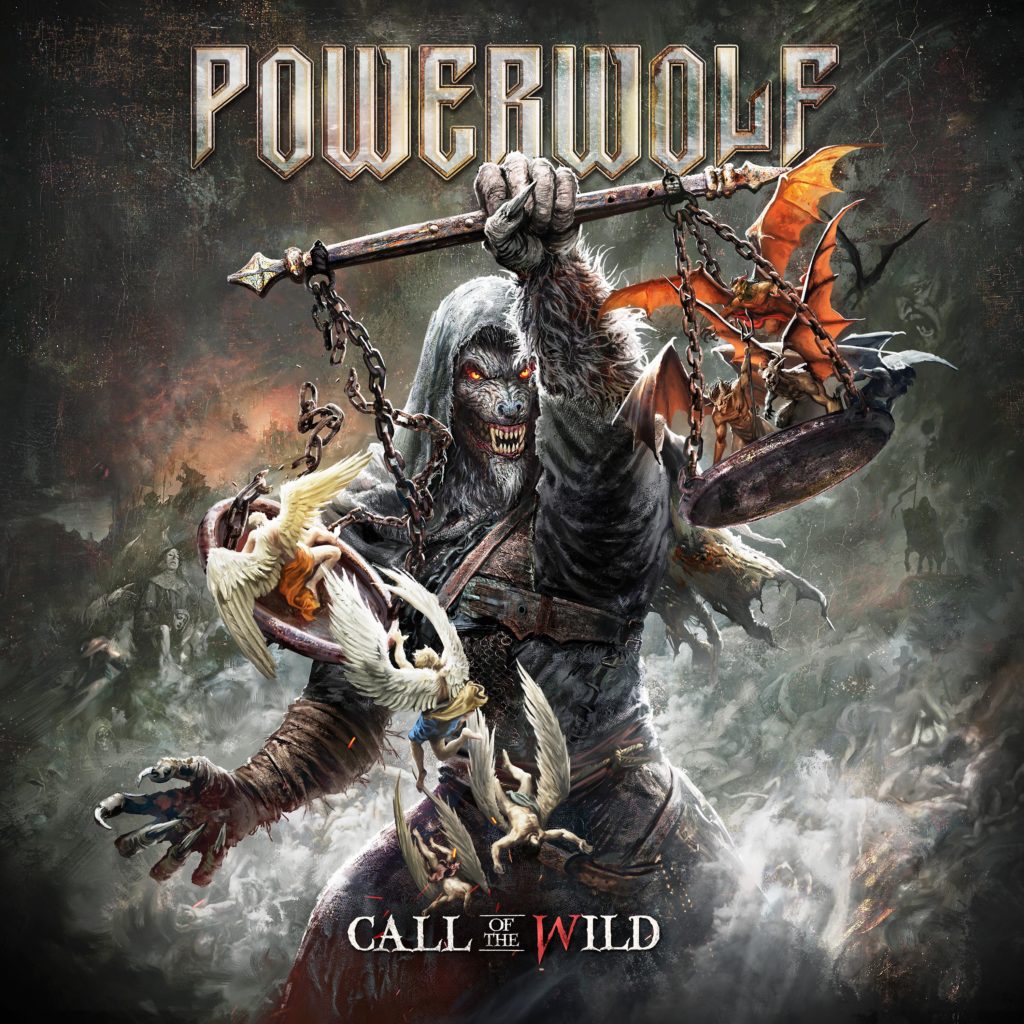
9) Call of the Wild, Powerwolf
We last saw Powerwolf in our 2018 album ranking where I mentioned that Powerwolf have dutifully trodden the same formula laid down in 2007’s Lupus Dei over and over again throughout the years. 2018’s The Sacrament of Sin was a very tepid step into breaking up the formula and Call of the Wild continues that very cautious step forward. What you get here is unmistakably Powerwolf, but with a couple of twists. On the fresher side of things, we get “Beast of Gévaudan” which reminds me of Sabaton’s style with its retelling of the titular beasts that ravaged France in 1764-1767. The track is also quite different for Powerwolf, featuring fast, staccado, machine-gun-like beats which make it stand out. “Blood for Blood (Faoladh)” is also quite different for Powerwolf, opening with a bagpipe solo (!) which instantly makes the track feel unlike anything in Powerwolf’s gothic power metal catalogue. That said, there are plenty of familiar tracks here for fans to sink their teeth into. “Faster Than the Flame” starts things off strong, “Varcolac” feels like “Werewolfs of Armenia” while being different enough to not feel like a ripoff and the title track feels like it was made to be sung in front of a packed arena. And, of course, there’s the now-obligatory horny track, carrying in the tradition that “Resurrection by Erection”, “Coleus Sanctus” and “Demons Are a Girl’s Best Friend” trail-blazed. This time we get our nun fetish-bait in “Undress to Confess” and oh my God it is the horniest Powerwolf track ever. Seriously, check out these lyrical excerpts:
For any sin you confide we take a cloth off your breast […]
From the lord she will get her kicks / Dressed to hide the dark and obsessed to ride him hard on the crucifix […]
Reveal yourself to the pastor, brings forgiveness at best / For any fabric on skin corrupts your mind like the pest […]
Naked skies see her go down at night, when on the cross she licks
All-in-all, Call of the Wild is more Powerwolf. It’s more of the really solid power metal we’ve come to expect from them and while they do take a few steps towards breaking the formula, the band is still clearly well within their comfort zone.
Like The Sacrament of Sin and Blessed and Possessed, one of the most exciting aspects of Call of the Wild is its deluxe edition. This features a whole bonus disc called Missa Cantorem, featuring vocal covers of Powerwolf songs. While I wasn’t too keen on the offering in The Sacrament of Sin, Blessed and Possessed‘s bonus disc was so good that I liked it more than the actual main album so I was interested to see what Missa Cantorem would be like. It was… about what I expected to be honest. Calling this a vocal cover isn’t an exaggeration, the band got a bunch of guest artists in to sing over Powerwolf’s own master recordings of hits that weren’t covered on the last bonus disc. It almost feels like a karaoke album in that regard and while it makes it feel kind of cheap, I can’t help but think that the pandemic made anything more than this too difficult to coordinate. That said, Missa Cantorem actually does have two really good vocal covers on it. First is Alissa White-Gluz’s gender-bent take on “Demons Are a Girl’s Best Friend” and I honestly like this version even more than the already-stellar original. Alissa’s gutteral vocals are extremely impressive and work surprisingly well with this song, lending it an entirely different feel to the original. Similarly, Johan Hegg (of Amon Amarth) brings his death metal vocals to “Nightside of Siberia” and it sounds awesome, once again working because it brings an entirely different feel to the song. Other songs don’t do quite as well, such as Doro Pesch’s admirable attempt at “Where the Wild Wolves Have Gone” or the inspired decision to have Christopher Bowes’ (of Alestorm) take on “Resurrection By Erection” – neither live up to the originals. Still, it’s worthwhile enough to upgrade to the deluxe edition if only for the two great tracks we get here.
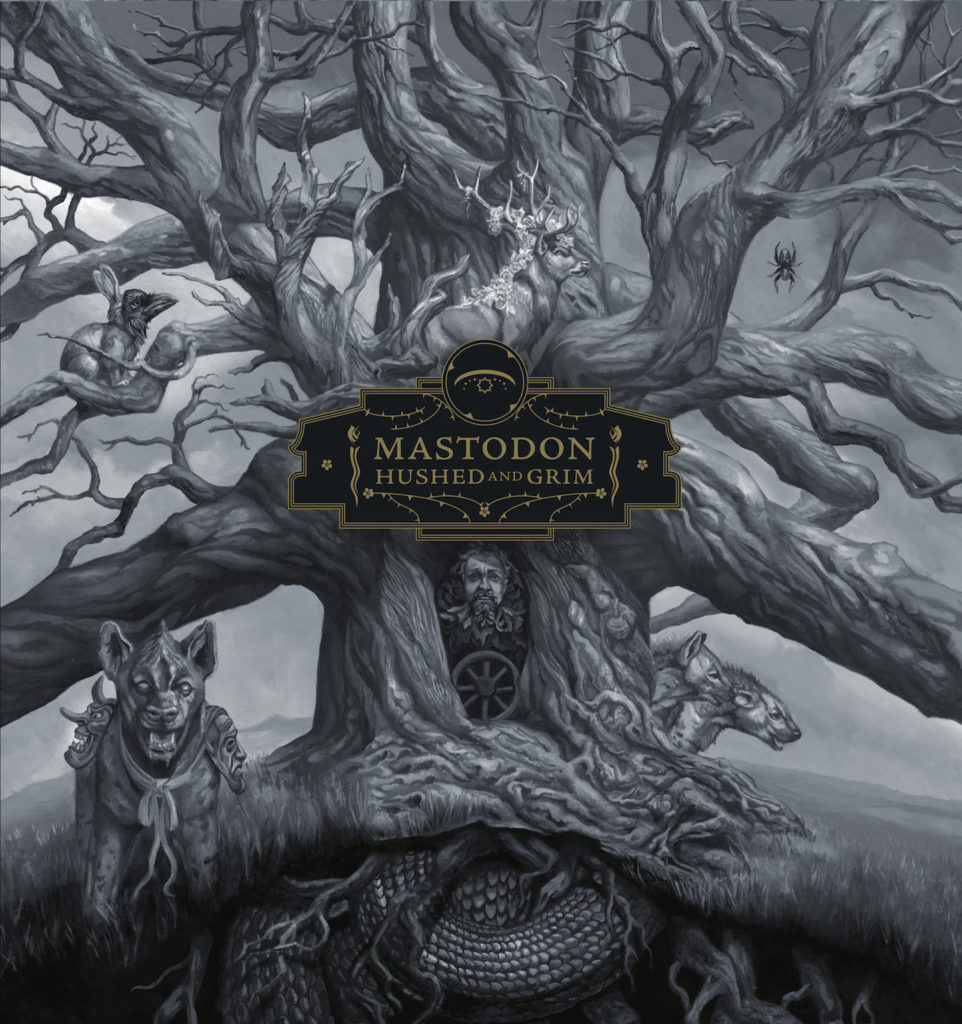
8) Hushed and Grim, Mastodon
When Emperor of Sand came out back in 2017, I said it felt like it was a throwback to Mastodon’s greatest hits. As much as I liked it, I had hoped that Mastodon would continue to evolve going forward instead of giving us something safe, comfortable and familiar. Well, I’m happy to say that Hushed and Grim is a brand new chapter for Mastodon, unlike any previous album they’ve released. Their closest analog would have to be the Cold Dark Place EP, but even that doesn’t paint a proper picture of what to expect of Hushed and Grim. Coming off of the death of the band’s long-time manager Nick John and Brann Dailor’s divorce, Mastodon are clearly dealing with some serious grief on this album which gives Hushed and Grim a palpable air of melancholy. Lyrically, this could be a doom metal album, but musically it’s clearly Mastodon’s sound, reminding me of their Blood Mountain and The Hunter albums. And, true to their name, Hushed and Grim is a mammoth double album at nearly an hour and a half in length. The result is a sprawling album with tons to chew over. While I definitely do like Hushed and Grim, it does have a couple issues for me. The first is that it’s so long that, to date, I haven’t managed to get through it all in one sitting. Secondly, the length causes the album to feel like it drags at times; I feel like Mastodon could have trimmed this album down quite a bit without losing its impact in the process. That said, this is an album that has so much going on with it that it is going to take me a very long time to fully appreciate, but I’m already starting to get drawn into the rawness of tracks like “Dagger” and the epic sludge metal in “Gobblers of Dregs” stands amongst Mastodon’s best work. I definitely recommend experiencing this album, I know that it’s getting a somewhat mixed reception among fans, but I do think it will be looked back upon as another classic in time.
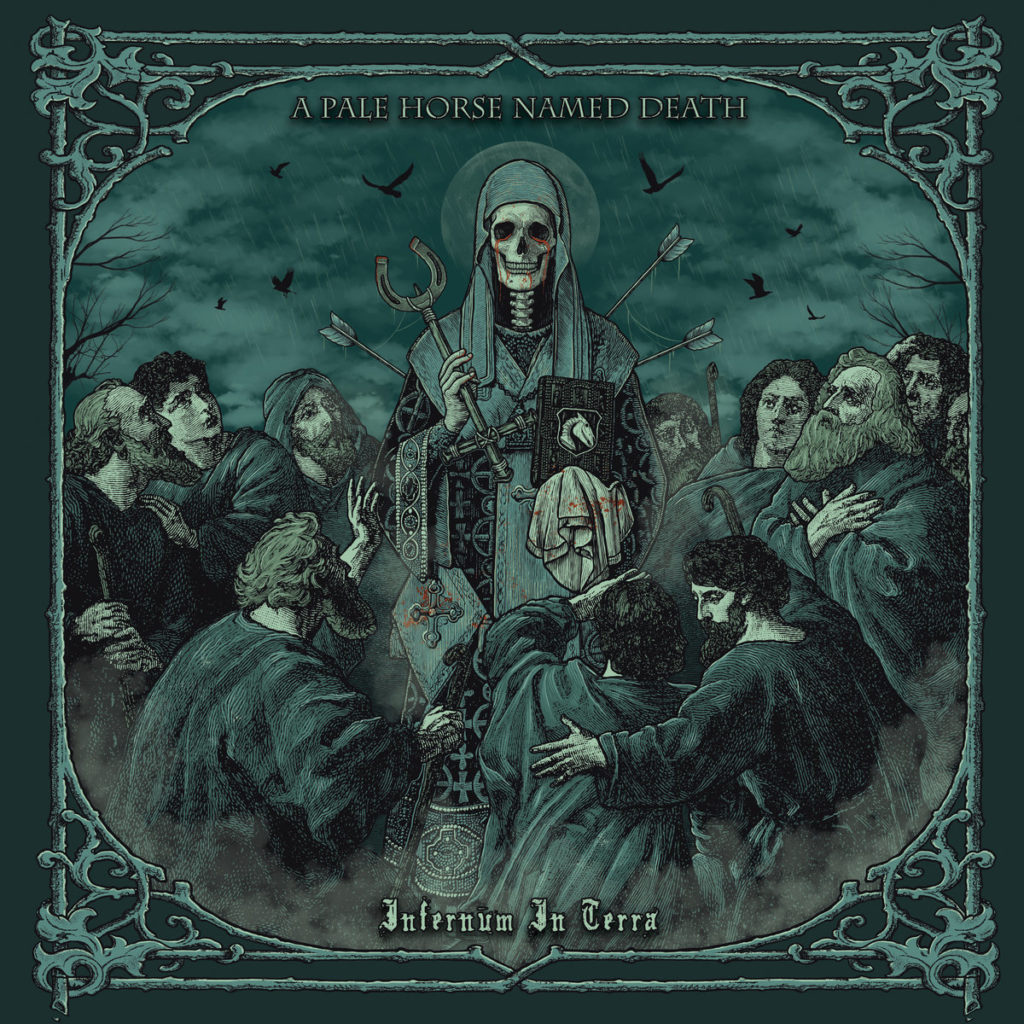
7) Infernum in Terra, A Pale Horse Named Death
While I wasn’t a huge fan of 2019’s When the World Becomes Undone, A Pale Horse Named Death managed to make a big impression on me due to their grunge-like sound and hopeless lyrics which really do wonders when you’re going through a depressive episode. Well, Sal Abruscato is back with another round of despair and I have to say it is quite welcome. Infernum in Terra doesn’t do much to change my perceptions of A Pale Horse Named Death, but there is some very incremental evolution here: the production is a bit better, the music is a bit more heavy and interesting and the songwriting is definitely stronger which makes for an infectious listen. Also worth noting is that, unlike their previous albums, Sal Abruscato’s singing doesn’t feel lethargic here, the album doesn’t feel like it drags on (I mean, it’s still slowly-paced due to the whole dour tone, but it feels more deliberately curated this time). Particular highlights include “Shards of Glass”, “Lucifier’s Sun”, “Slave to the Master” and “Reflections of the Dead”, all of which I’ll find myself singing at random times, which just makes me want to listen to the album all over again. If you’re like me and like to channel your emotions into music then Infernum in Terra is a great album and is going to do wonders for your depression.

6) Servant of the Mind, Volbeat
Silly me, I was ready to hit publish on this article when suddenly I was caught completely unawares by a brand new album by one of my favourite bands of the last decade. I knew there was no way I was going to let a new Volbeat album pass me by on the year’s best-of list, even if their last effort, Rewind, Replay, Rebound was easily one of their weakest albums.
Thankfully, Servant of the Mind is a return to form and evolution in one, a fact which is clear as soon as the opening track, “Temple of Ekur” starts up. Volbeat are often considered a metal band, which is a label I’ve never really agreed with, but they really are heavy on this album. This is easily the heaviest they’ve been since their first two albums, if not heavier, which is a really refreshing twist after their last couple albums made the shift towards commercial arena-ready rock. That’s not to say that this album isn’t familiar (it certainly is) or that it doesn’t have commercial appeal – tracks like “Wait a Minute My Girl” and “Dagen Før” are made for radio and are both incredibly catchy in their own right, standing tall beside the heavier tracks like “Shotgun Blues” and “The Sacred Stones”. In addition to their usual rockabilly influences, Volbeat also brings some surf rock guitar onto this album, most obviously on “The Devil Rages On” and “Step Into Light”. I’m glad to see that Volbeat are still delivering surprises and aren’t content to put out the same album over and over again. While I’m going to look forward to their next album, in the meantime I can tell you that I will be listening to Servant of the Mind on repeat for quite a while.
Oh, also worth noting, Volbeat love their deluxe editions and Servant of the Mind is no different in this regard. Whereas Rewind, Replay, Rebound‘s offerings were very slim (basically just some demos that were barely different from the released track), Servant of the Mind‘s deluxe edition is worth the extra couple bucks in my opinion. Bonus tracks “Return to None” and “Domino” stand out quite a bit from the rest of the album’s offerings and the alternate versions of “Shotgun Blues” and ” Dagen Før” are transformative enough to be worth a look.
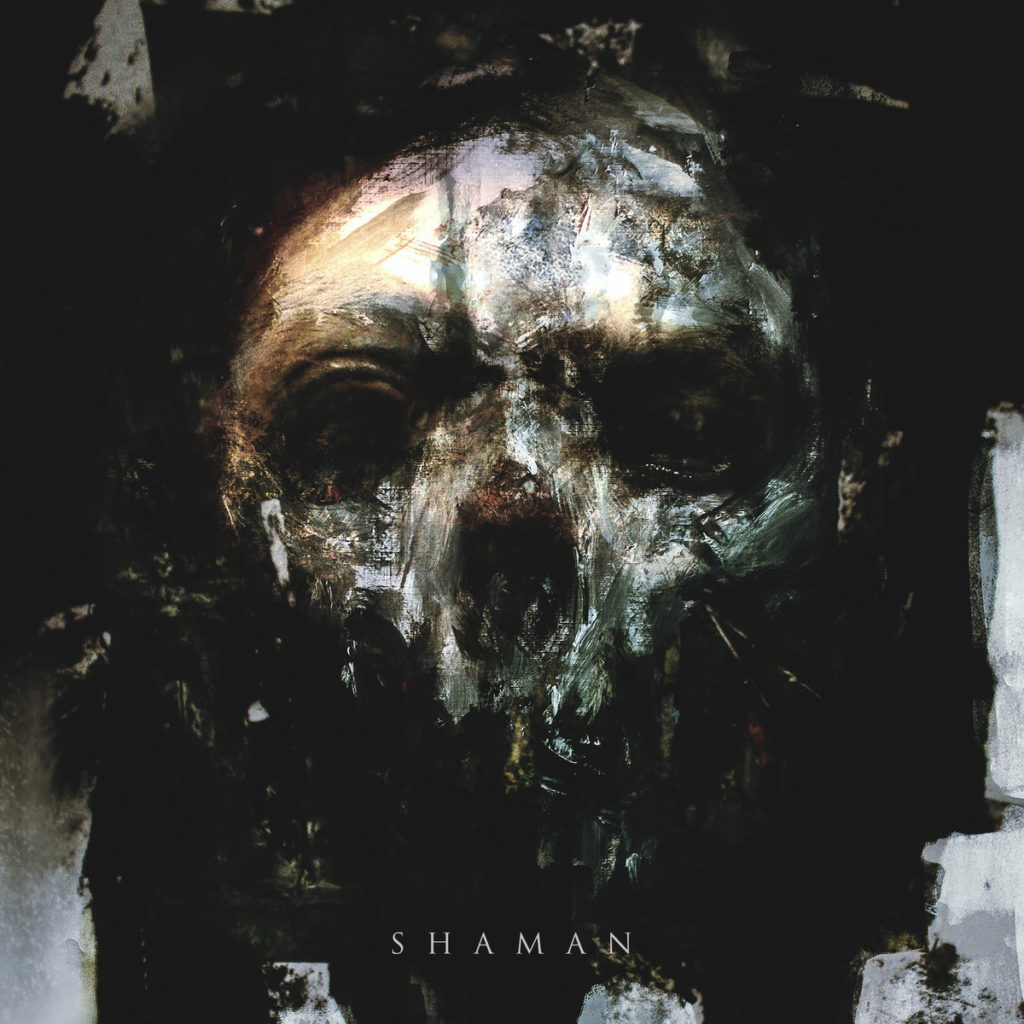
5) Shaman, Orbit Culture
I’m a simple man – I see a metal album with a badass cover and I listen to it. By that measure, Shaman is one of the most darkly evocative covers I’ve seen all year, thanks to the incredible work by Bahrull Marta, whose art style is best described as the stuff of nightmares. A cool cover is all well and good, but what about the music? Orbit Culture are described as a combination of groove metal and melodic death metal, which is a pretty accurate categorization – their music is heavy and aggressive, but more focused on the rhythm rather than speed like you might expect from a death metal band. Their vocals are not so much screamed, growled or yelled as they are roared, akin to Impending Doom, while the backing vocalist (who features in every track) sounds like James Hetfield of all people.
While I found “Mast of the World” and “Flight of the Fireflies” interesting and enjoyable, I initially was thinking that Shaman would probably be in the middle of the pack for 2021 until “Carvings” started and made me sit up and take notice for real. “Carvings” is where Orbit Culture’s brand of groove/melodic death metal really started to stand out and had me literally headbanging along to the beat. This continued into “Strangler” but it was “A Sailor’s Tale” that truly blew the lid off of this album for me. Perhaps unsurprisingly given the title, this track is pirate death metal and holy shit is it amazing. It builds up in momentum until it gets to the incredibly heavy end section where I literally just want to headbang and put my devil horns in the sky, it’s easily one of my favourite tracks of the year. It was so good that I played it the first time and then immediately played it a second time (and would have done a third time if I didn’t have to be elsewhere right then). All this for two freaking dollars on Bandcamp!!! Suffice to say, I was quite happily surprised by Shaman and will definitely be checking out all of Orbit Culture’s music as a result!
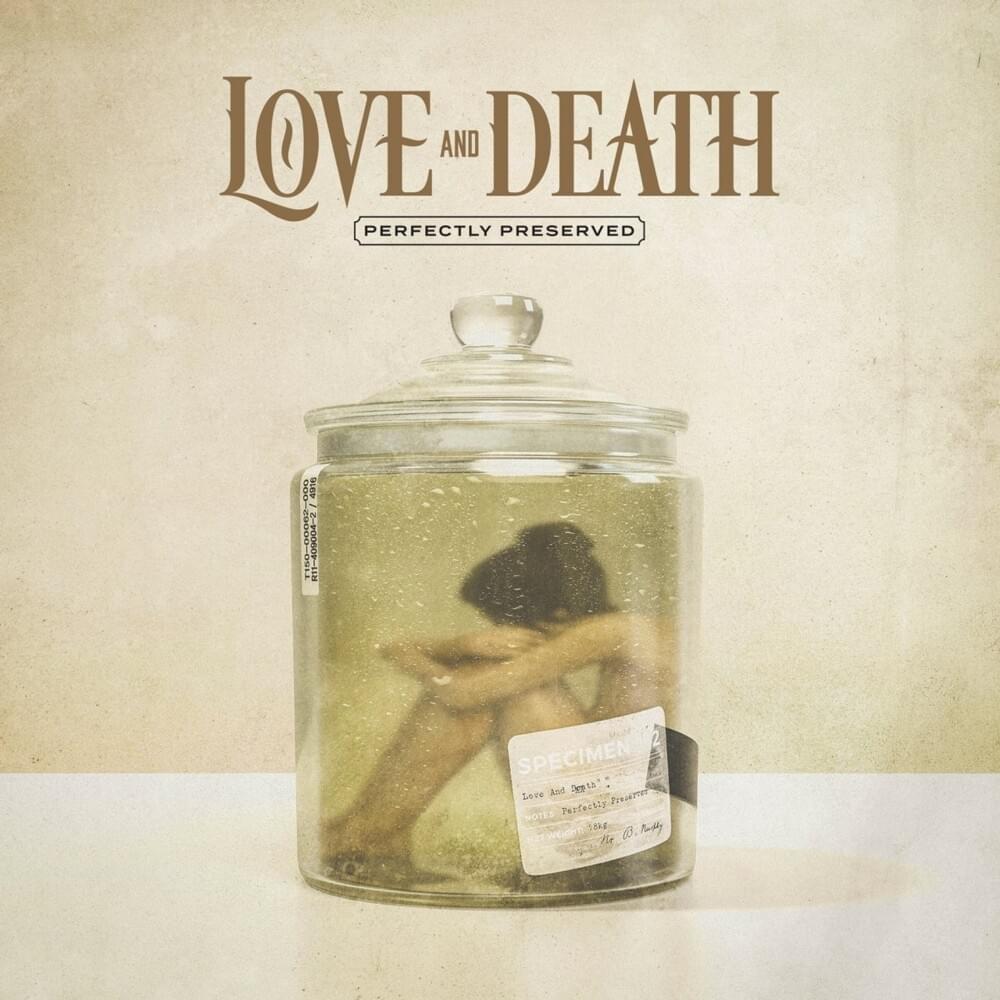
4) Perfectly Preserved, Love and Death
Holy crap has it really been eight years since Between Here & Lost? To be fair, at the time Love and Death was Brian “Head” Welch’s side-project and he went back to Korn around the same time so he was a bit too busy to get the band back together. As a result, half the band has been replaced for Perfectly Preserved, but it seems to be for the best because Love and Death are forging their own identity with this release. No longer are they just “Head’s side project”, Love and Death actually feels like it’s the product of a full band’s collaboration. The most obvious evidence of this is that band co-founder JR Bareis shares equal vocal duties with Head on this album, lending a more melodic and soft tone in contrast to Head’s harsh, aggressive, shouted singing. When the two work together on a track it adds new layers to what’s possible for Love and Death. That alone would lend Perfectly Preserved a new feel for the band, but then there’s the addition of Jasen Rauch on bass – that may not sound like it would make much of a difference, but his influence is all over this album. Rauch is perhaps better known as the former lead guitarist for Red and current lead guitarist for Breaking Benjamin, and has also produced albums by Breaking Benjamin and Love and Death. You can feel all these influences colliding because Perfectly Preserved very much feels like Korn meets Breaking Benjamin and it’s a mix I really dig.
The album kicks off strong with “Tragedy” before moving to “Down”, a moody and introspective track which is up there among the best tracks of Head’s solo career. Then Love and Death pull off a coup with perhaps the most surprising track of the year. What, you thought Head’s Devo cover on Between Here & Lost was cute? Well pull over because “Let Me Love You”, a goddamn DJ Snake and Justin Bieber cover, is fucking fantastic. Lacey Sturm is on guest vocals here and everyone gives this 110% to knock it out of the park, easily one of my favourite tracks of the whole year. This album came out in February and I’m still shocked that this Bieber track is as good as it turned out to be. Perfectly Preserved would already be up there among the best of the year for me at this point, but the band keeps the strong tracks coming, from the duelling vocals of “Slow Fire”, to the melancholy of “Lo Lamento”, to the raw “Affliction” and closing on the aggressive and energetic breakdowns of “White Flag”. Perfectly Preserved is fantastic and a very welcome return for Love and Death. I just hope that we don’t have to wait too long for their next evolution, because Perfectly Preserved shows that Love and Death are every bit as good as their members’ main acts. Let this be a reflection of just how good 2021 has been for music – Perfectly Preserved was, for a while, my favourite album of the year and a top contender for the year-end accolade.
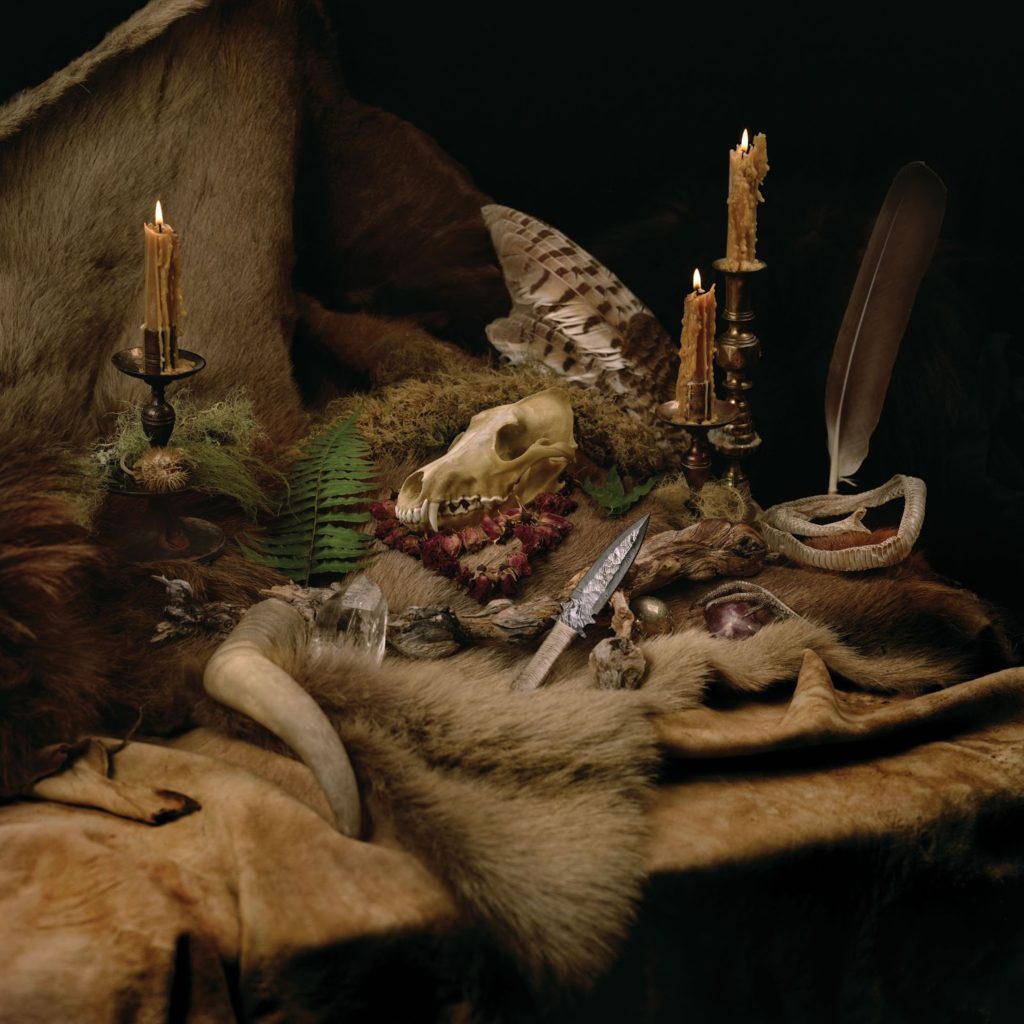
3) Primordial Arcana, Wolves in the Throne Room
I’ve mentioned in the past that I had been searching for a band to fill the void Agalloch left with their disbandment and Wolves in the Throne Room seemed to be the band most often recommended. At the time I wasn’t really a big fan of what I heard, but in 2021 I’ve found myself coming back to their 2017 album Thrice Woven with fondness for its take on atmospheric black metal. As I was getting back into that album, Primordial Arcana dropped and I was curious to listen to their newest LP. All I’ll say is holy crap did I ever pick a good time to get back into Wolves in the Throne Room because Primordial Arcana has got to be by far the best black metal album I’ve ever listened to (again, this is coming from someone who has complained several times in the past that most black metal bleeds into an undifferentiated mass for me).
Primordial Arcana takes you on a musical journey, each song capturing a different tone and conjuring a new mental landscape, from the ethereal and sinister “Mountain Magick”, to the East-Asian strings of “Spirit of Lightning”, to the marching beat that unites “Primal Chasm (Gift of Fire)”, “Underworld Aurora” and “Masters of Rain and Storm”, to the atmospheric and spooky feel of “Skyclad Passage”. “Masters of Rain and Storm” bears special mention, as it can be best described as the black metal “Jesus of Suburbia”. Seriously, this song goes places, seamlessly transitioning from one style to another, almost like a full album crammed into one incredible eleven-minute song.
It’s also quite clear that Wolves in the Throne Room brought a ton of craft and talent to this album – it doesn’t feel like a bunch of 30 year olds jamming for fifteen minutes with no plan, every minute has been laid out to produce a specific feel. In addition, the production quality is fantastic – again, some black metal bands think that they have to record on a potato to get a “raw” feel, but Wolves in the Throne Room prove here that good music speaks for itself. Primordial Arcana is best experienced as a journey from start to finish (which, at only 50 minutes if you include the bonus track, isn’t bad), but if you’re going to experience a single track from this album, make it “Masters of Rain and Storm”. This album is fantastic from start to finish and at only $10 USD on Bandcamp it’s an absolute steal.

2) Moonflowers, Swallow the Sun
What a year for Swallow the Sun. For most bands, a massive live album like 20 Years of Gloom, Beauty and Despair would have been enough, but then Swallow the Sun had to surprise us with a whole new studio album to boot. Like I said earlier, Swallow the Sun have a way of making misery beautiful and Moonflowers may be the best example of this in action. Coming off of the death of songwriter Juha Raivio’s partner, Aleah Stanbridge, to cancer in 2016, When a Shadow is Forced Into the Light felt like a monument to grief. Moonflowers, in contrast, feels like an extended lament at the lingering feelings of loss. While this could be oppressive in its dourness (see: A Pale Horse Named Death’s discography), Moonflowers is finds the beauty in the sorrow which makes it very easy to listen to. Swallow the Sun hit a strong balance between softer and heavier tracks, all in their signature doom metal sound. Moonflowers doesn’t reinvent Swallow the Sun’s sound – the only real musical evolution is the inclusion of more backing strings, which give songs such as “Enemy” and “Woven Into Sorrow” a bigger, more epic feel and which make the album’s strong emotions hit harder. My favourite track may have to be “All Hallows’ Grieve” though, which features the delicate guest vocals of Cammie Gilbert and best exemplifies the beautiful melancholy that Swallow the Sun strives for. However, the album does start to drag a bit in the latter-half with “The Void” and “The Fight of Your Life”, which ditch the backing strings and losing some of the energy of the first half of the album. That’s basically the only reason why Moonflowers isn’t my album of the year, I had to debate long and hard between this and my #1 pick, but a couple of weaker tracks here were ultimately the difference-maker.
Moonflowers also features a bonus disc where every single song on the album has been redone as classical string music. It’s an interesting take on the material, but one that I quickly grew bored of. For my tastes, I’d much rather experience this album the way it was intended, especially because these string versions lack the vocals of the main album. It doesn’t really hurt anything, but I would have liked if this disc was something I’d find myself going back to.

1) God is Partying, Andrew W.K.
As I’ve said many times in the past, Andrew W.K. was introduced to me as “life metal” (as opposed to death metal), best exemplified by his wall of sound style and enthusiastic lyrics that are obsessed with having a good time. His first two albums, I Get Wet and The Wolf are classics and nothing else he’s put out has come close to matching that quality. 2018’s You’re Not Alone was a return to form, but it felt very safe, like a conscious effort to recapture Andrew W.K.’s glory days rather than doing anything different. So, with all this in mind, if you’d told me that God is Partying was going to be a departure from Andrew W.K.‘s classic mold (including his harsh, shouted vocals I like so much) and his darkest album ever, I would have likely expected this to flop since it goes against everything I know that I love about this artist. Thankfully, this is why artists shouldn’t give fans what they want, because God is Partying is every bit as good as Andrew W.K.’s two classic albums, if not better.
One element from You’re Not Alone which carries over to God is Partying is the spiritual, pseudo-religious themes, but they’ve taken on a more ominous and dark turn here. “Everybody Sins” demonstrates this with epic grandiosity, at times feeling like a gospel track while also being one of the heaviest songs in Andrew W.K.’s entire discography. In fact, there’s two other tracks on here which are easily among Andrew W.K.’s heaviest songs, including “Babalon” and “I’m in Heaven”. Pretty much every track has some sort of experimentation going on, from “Everybody Sins”‘ backing organs, to “Babalon” incorporating electronics and synthesizers, to the sinister tone and incoherent screams backing “I’m in Heaven”, to “Remember Your Oath”‘s ballad-like feel, to “I Made It”‘s energetic, piano-led melody which makes it feel like a Michael W. Smith worship track.
Oh and it’s also worth noting that Andrew W.K. has dropped his signature harsh vocals on this album that I like so much. I hated his mid-2000s albums because they did this, but man does the new, soaring vocal style ever work here, especially on the epic, eye-watering “No One to Know”. Meanwhile, Andrew W.K. is mining much more personal and dark territory than ever before (I’m pretty sure he doesn’t even say “party” once in this whole album), most clearly evidenced with the nasty breakup song “My Tower”, which is downright vicious for an Andrew W.K. song.
God is Partying is Andrew W.K. at his most diverse, mature and assured. I figured I’d enjoy this album, but it was way better than I was expecting. It’s impressive enough as it is, but when you factor in just how off-brand Andrew W.K. is on this album it makes it even more impressive that I’m this blown away by it. If that’s not album of the year material, I don’t know what is.
